EXTREMELY RARE! WWII SECRET 1944 Capture of the Marianas Islands - Saipan Guam Tinian Headquarters of the Commander in Chief Military Intelligence Report*
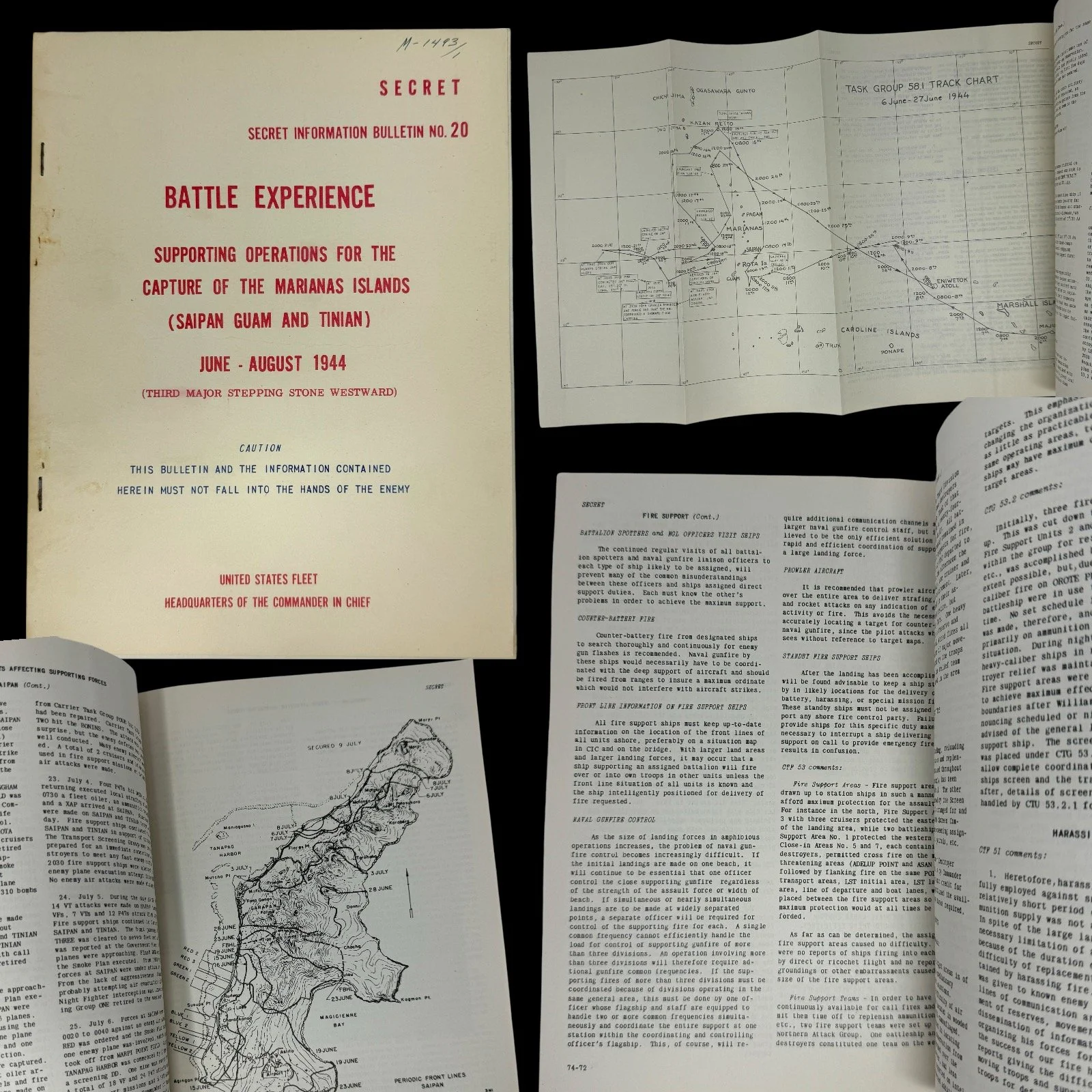
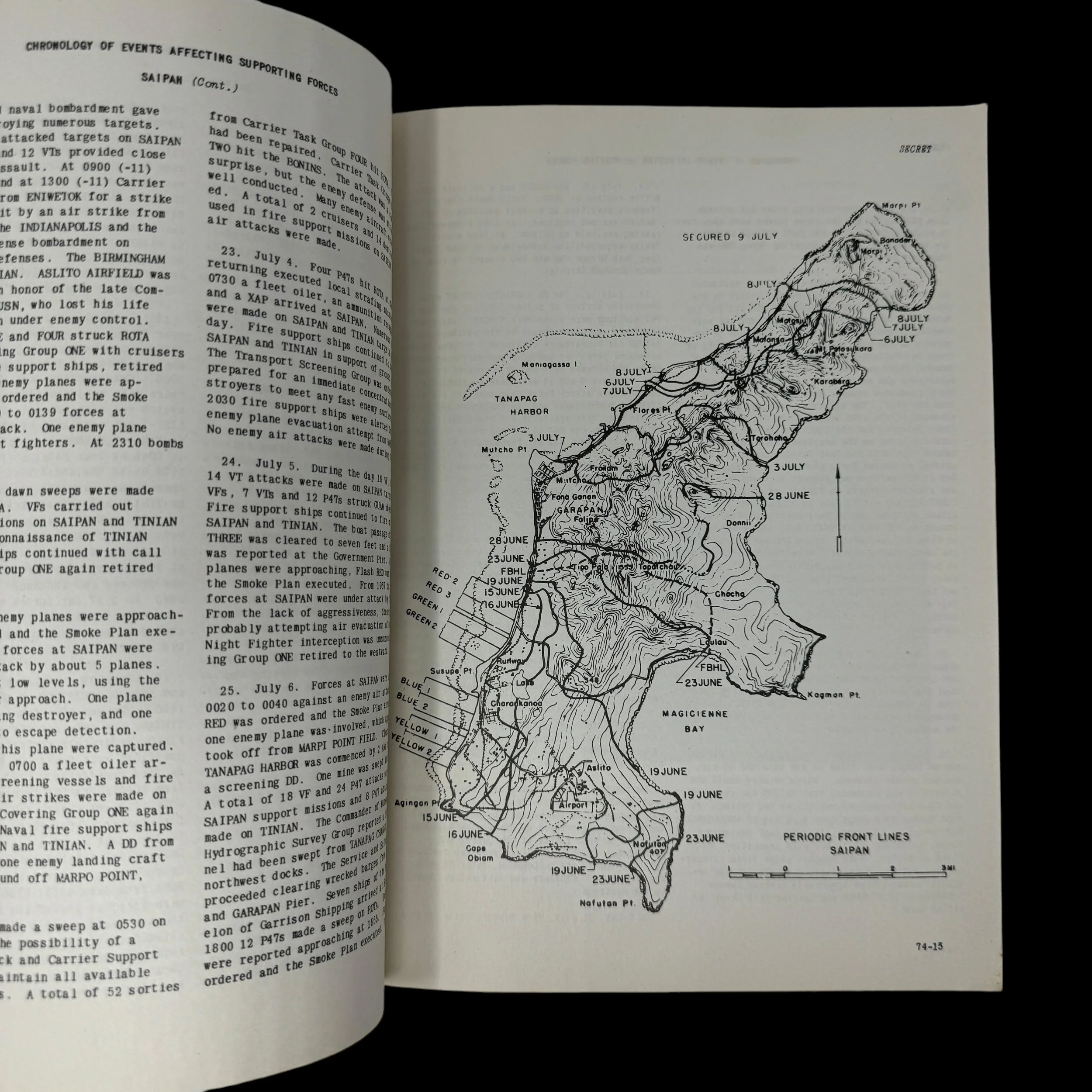
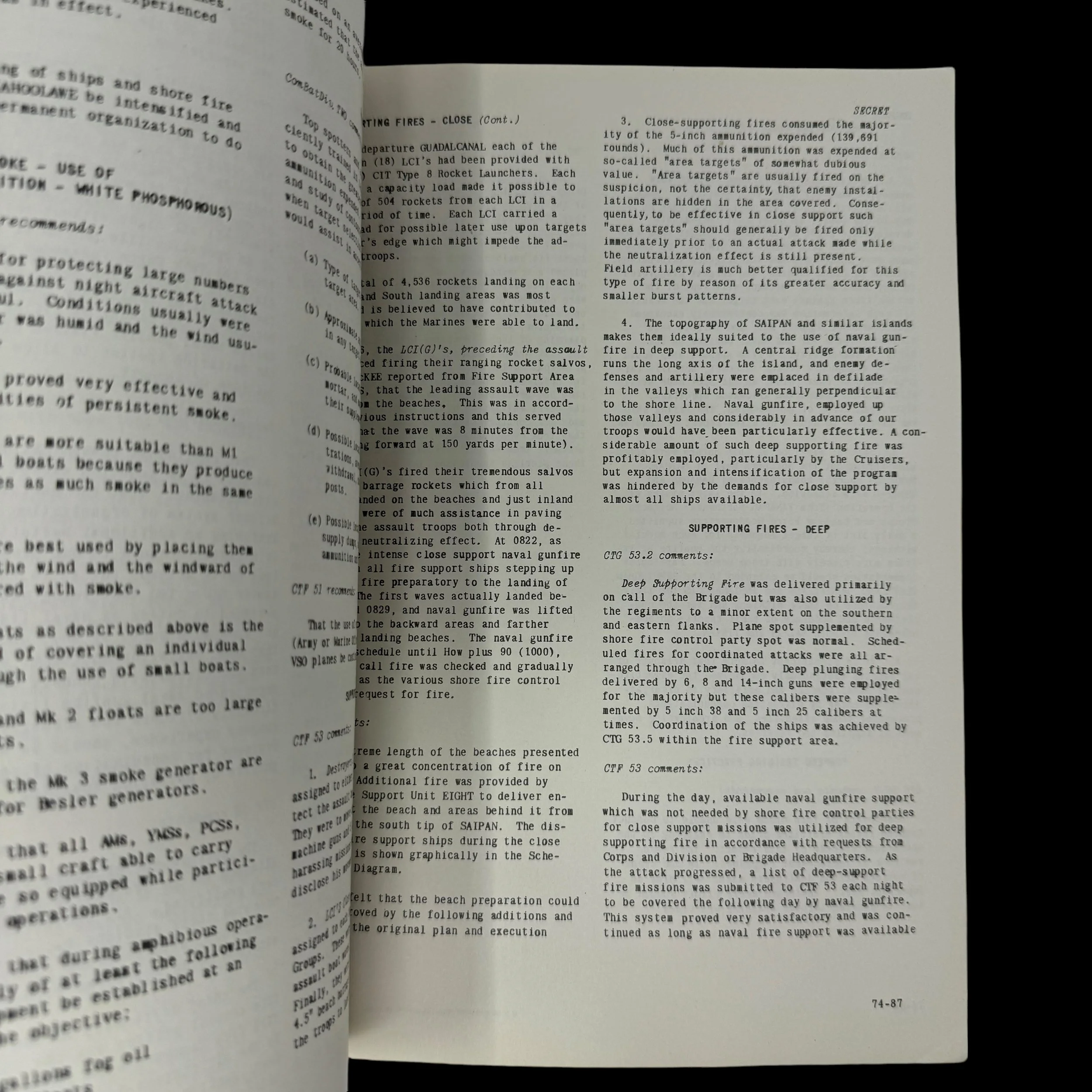
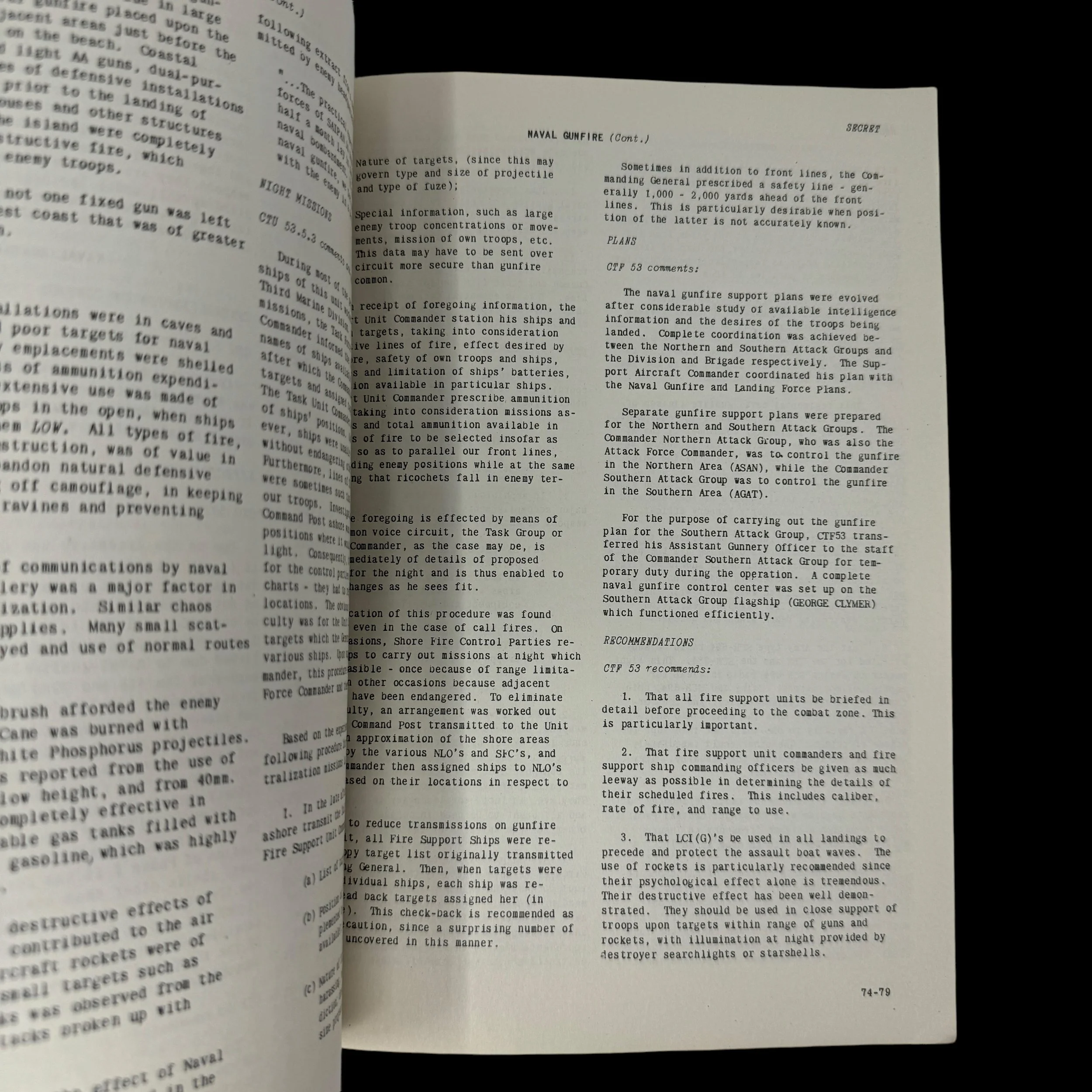
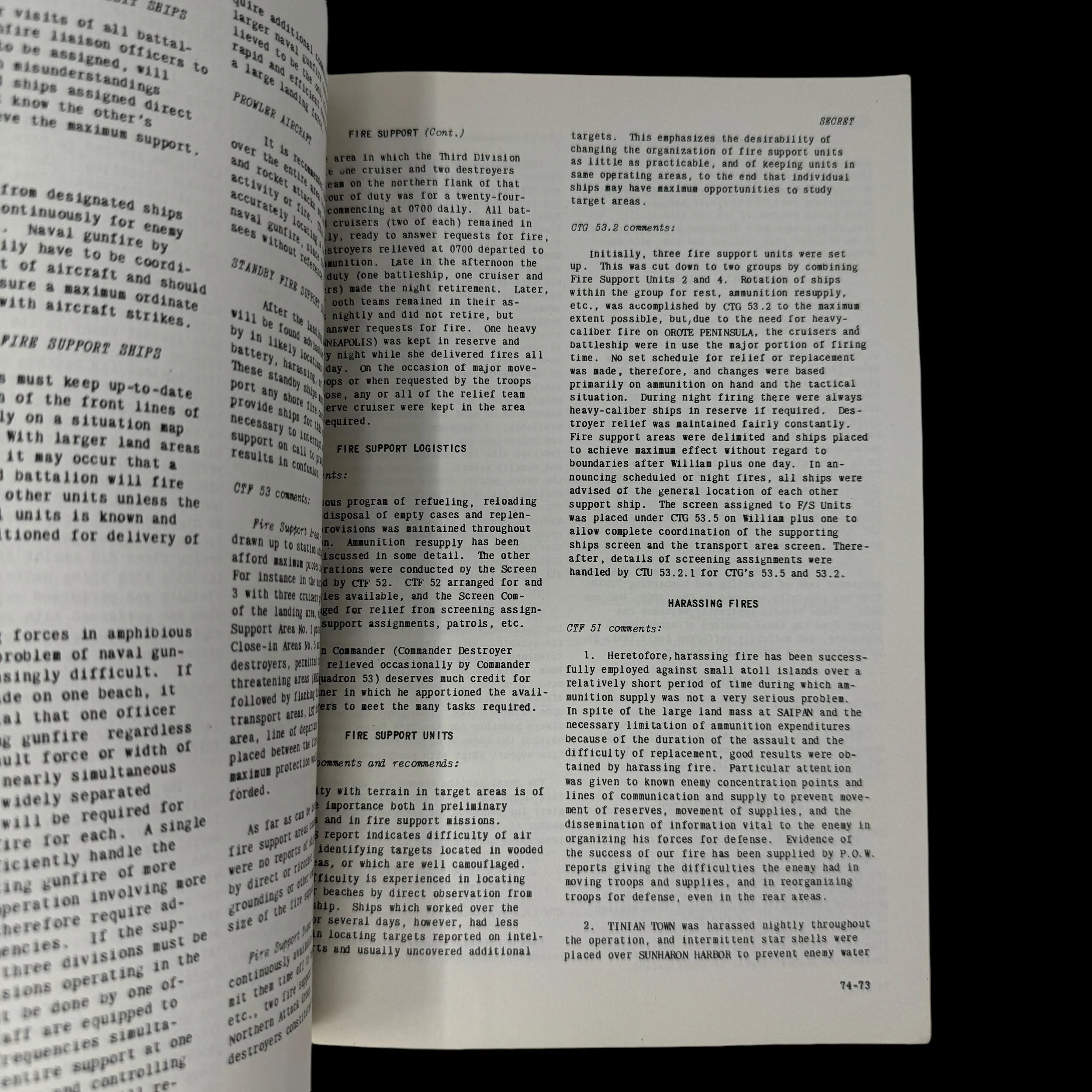
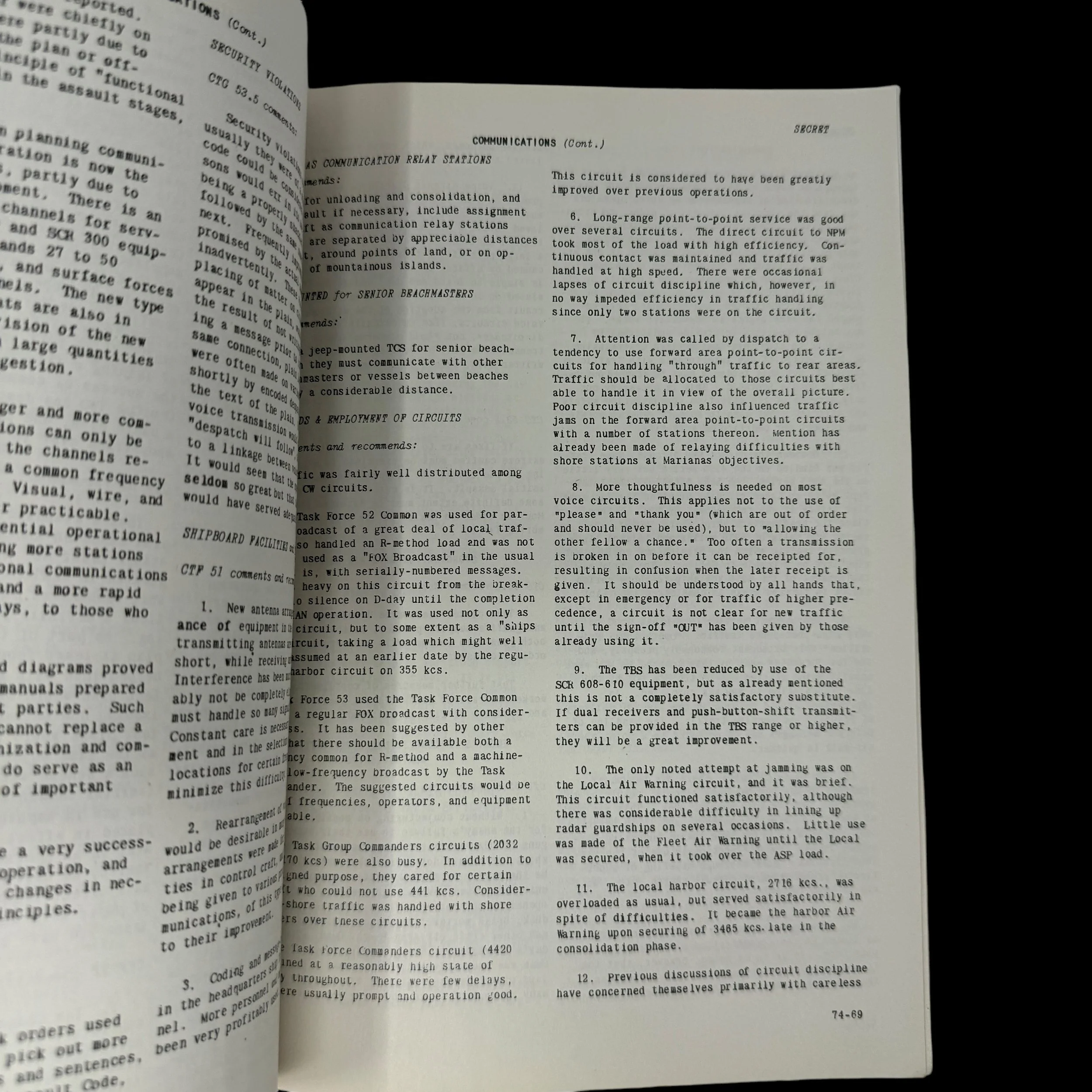
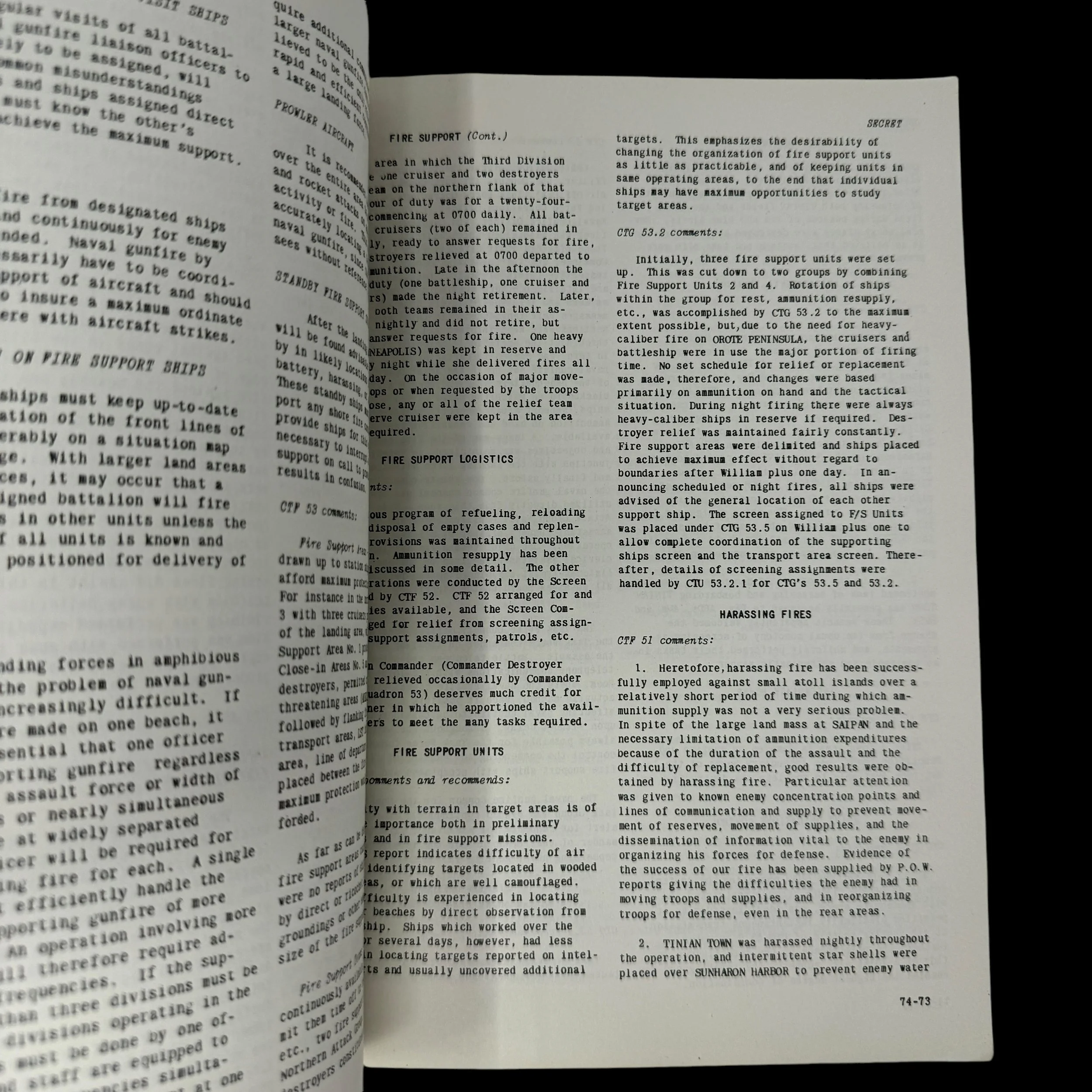
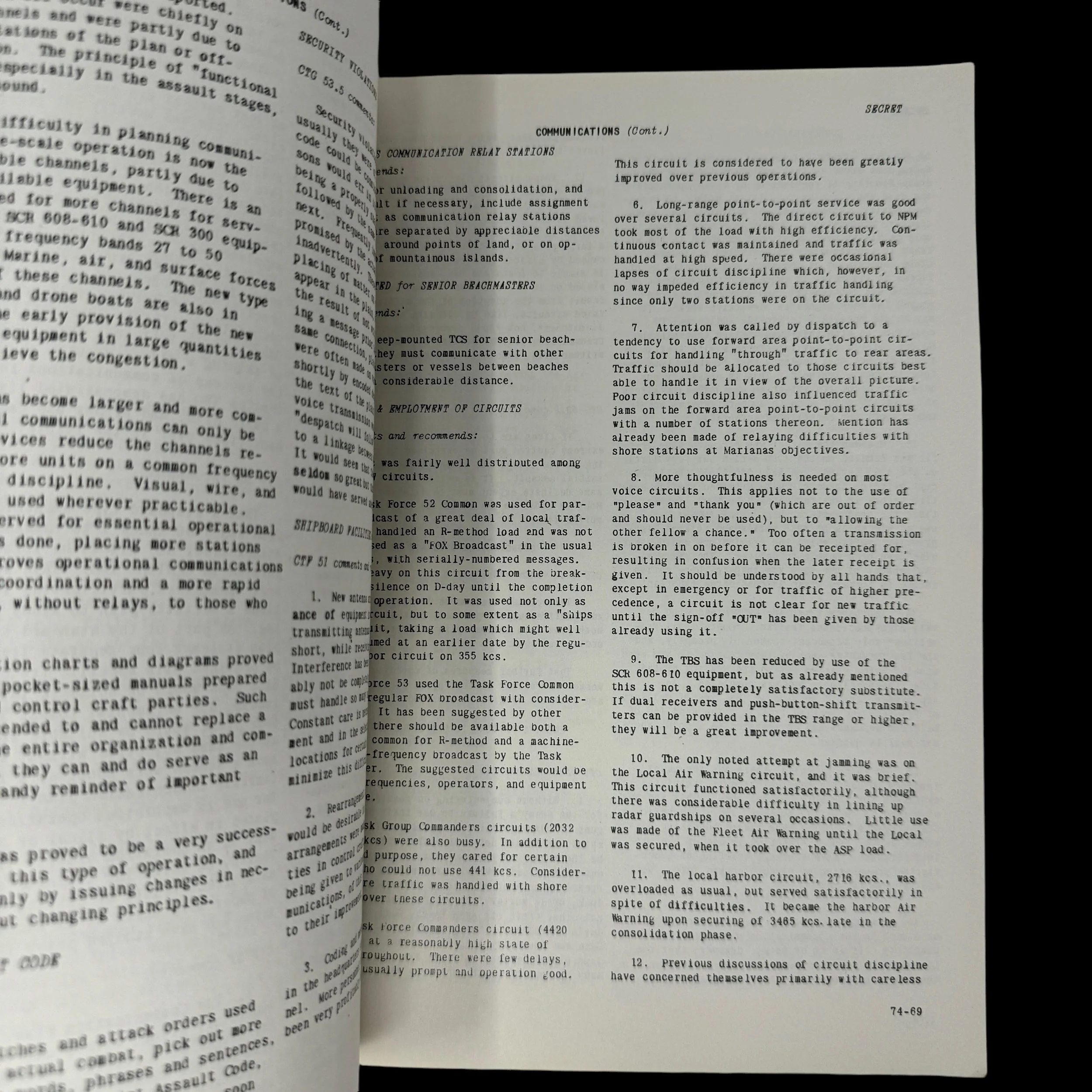
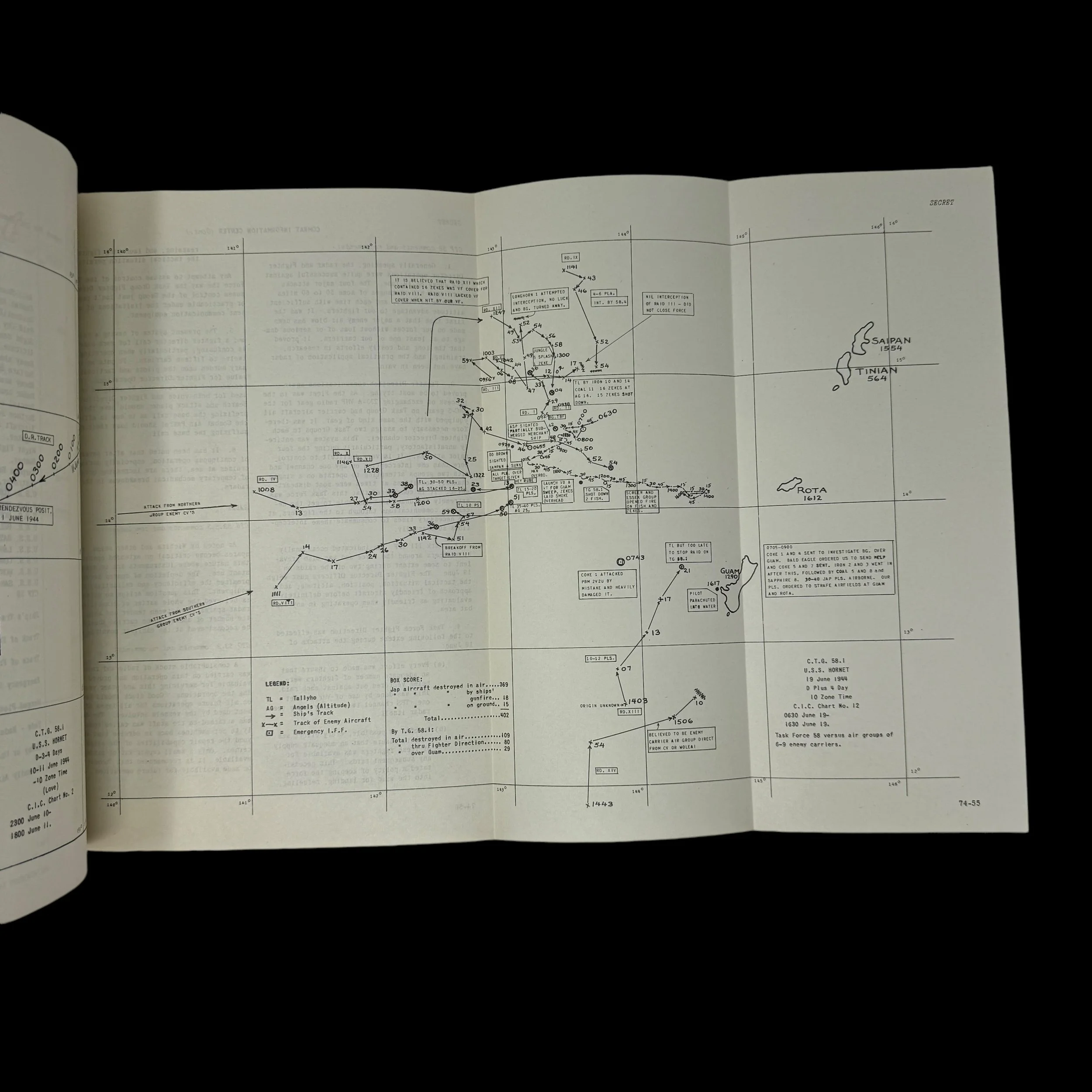
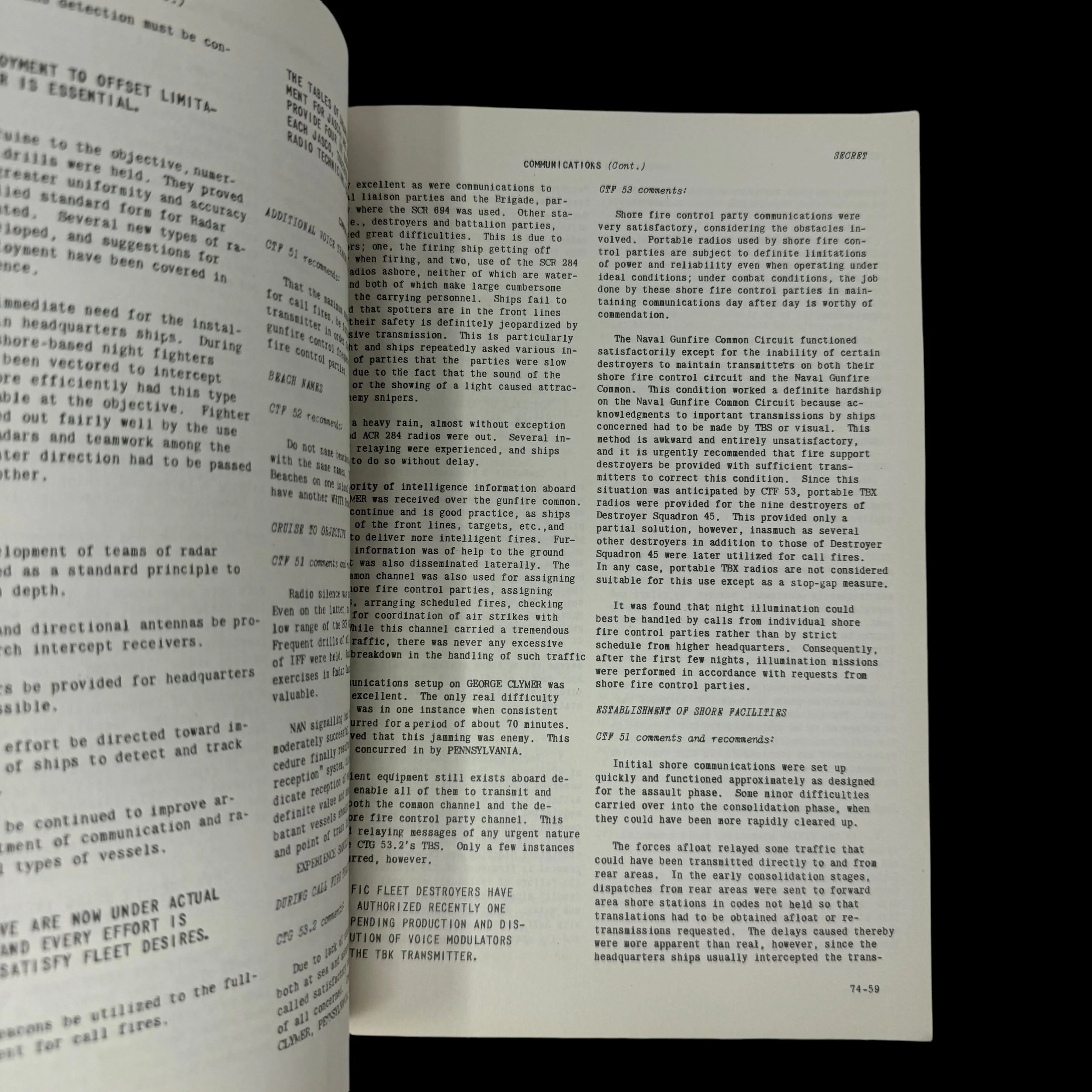
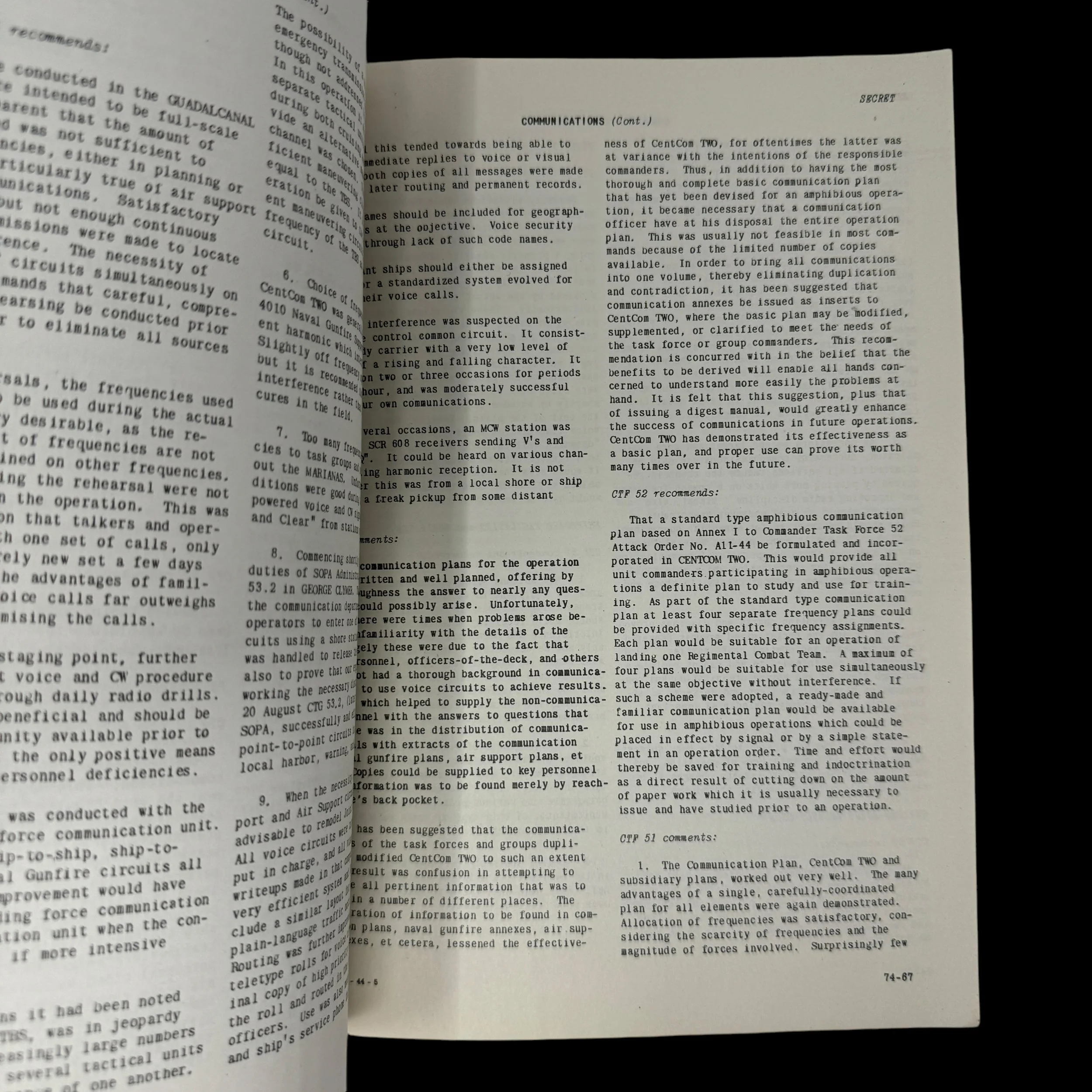
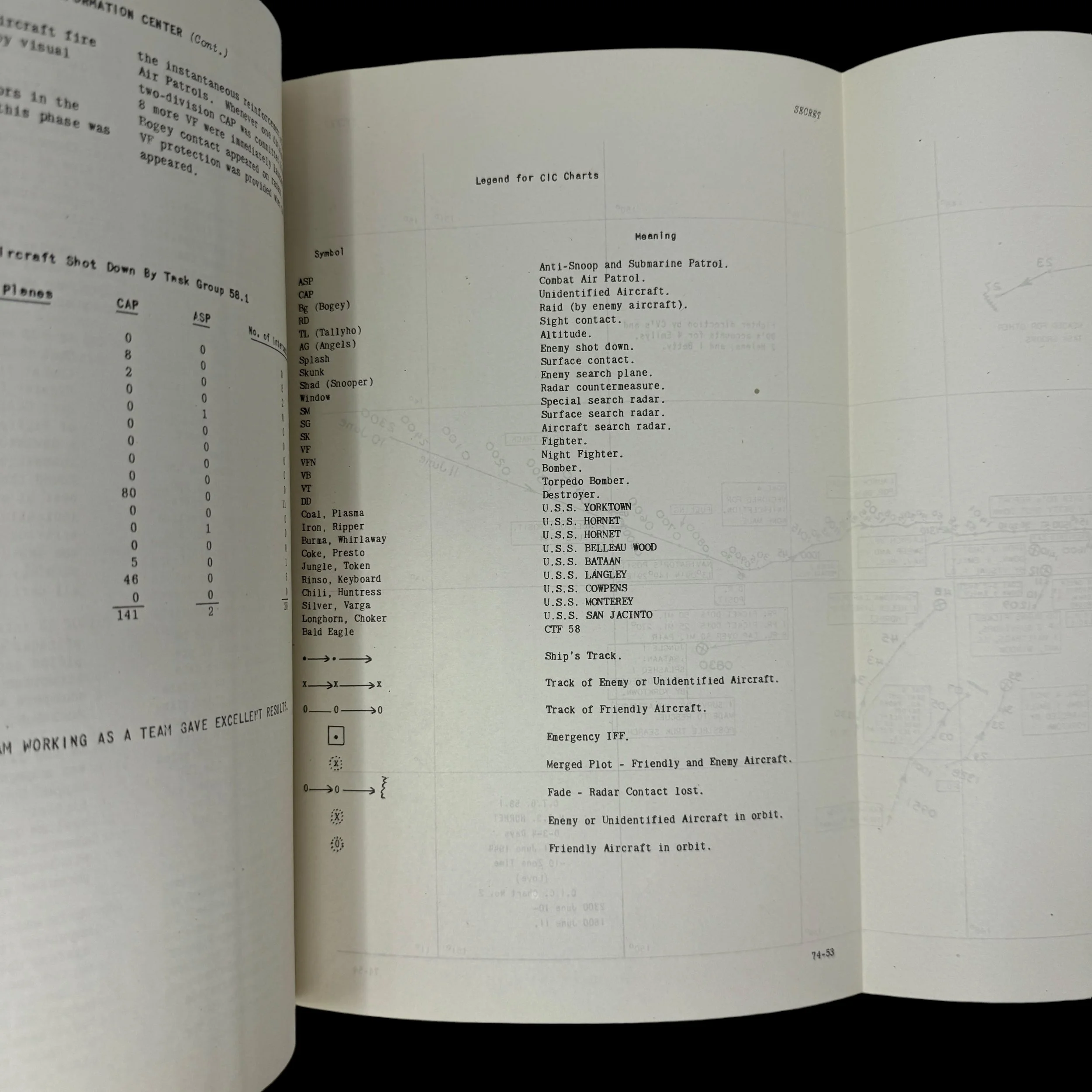

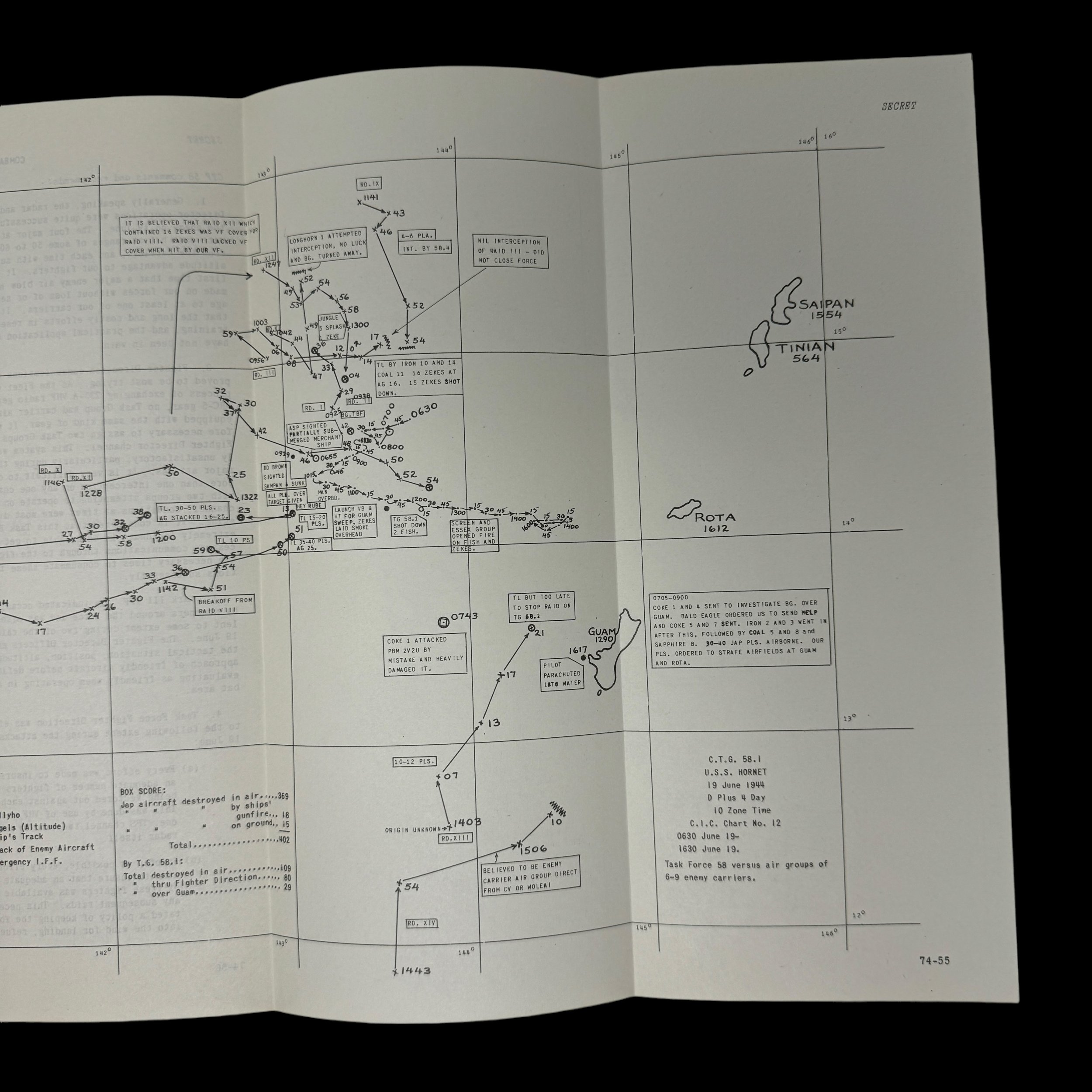
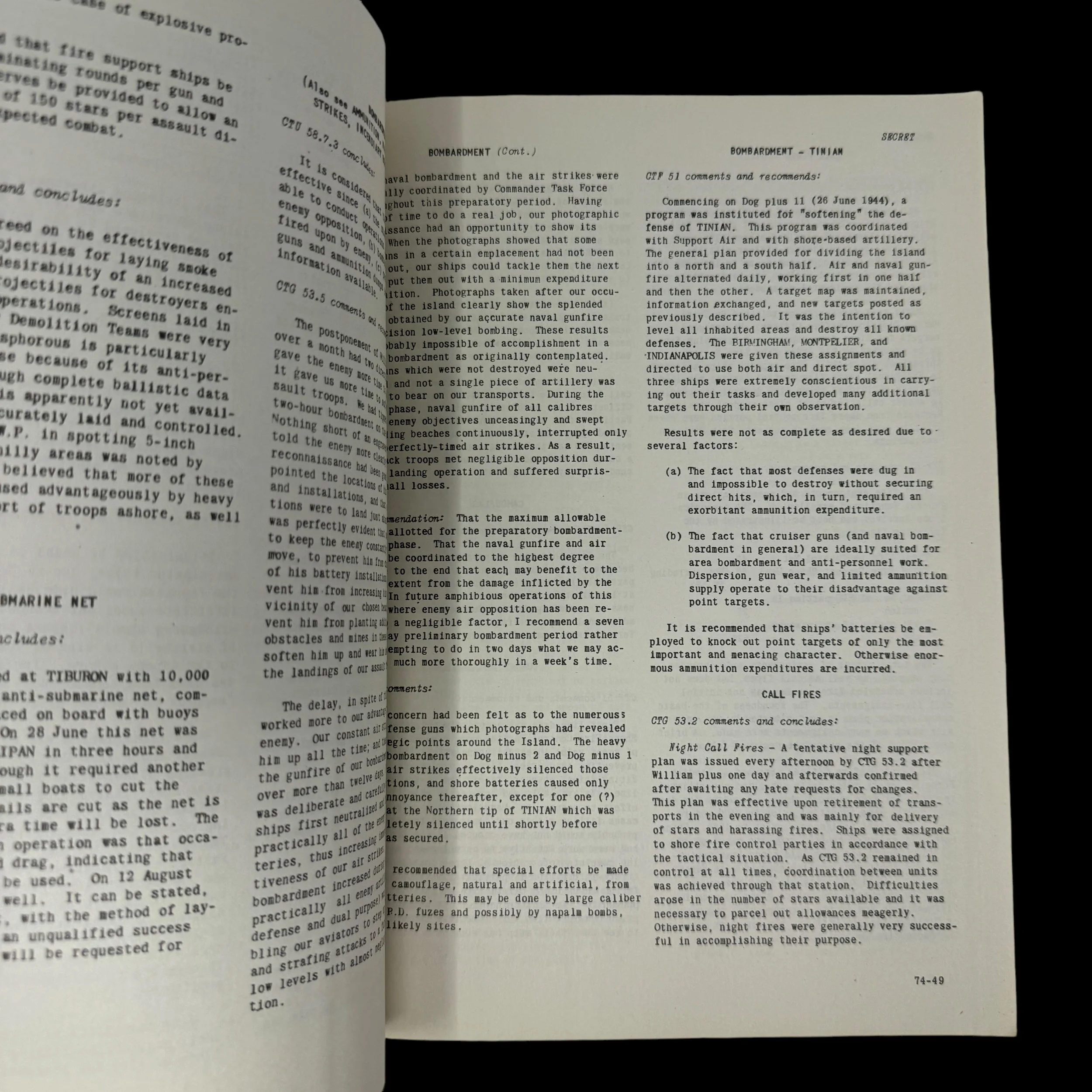
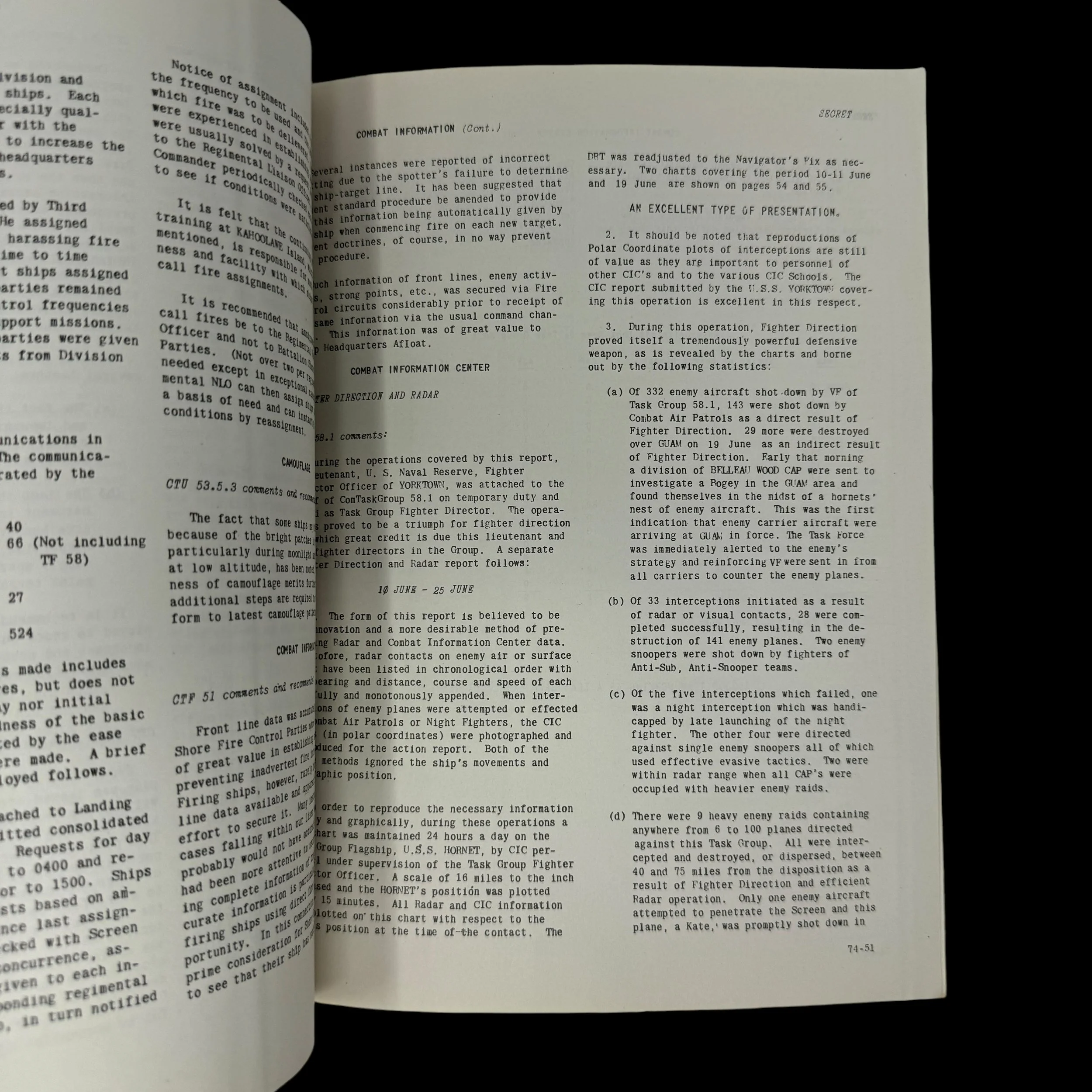
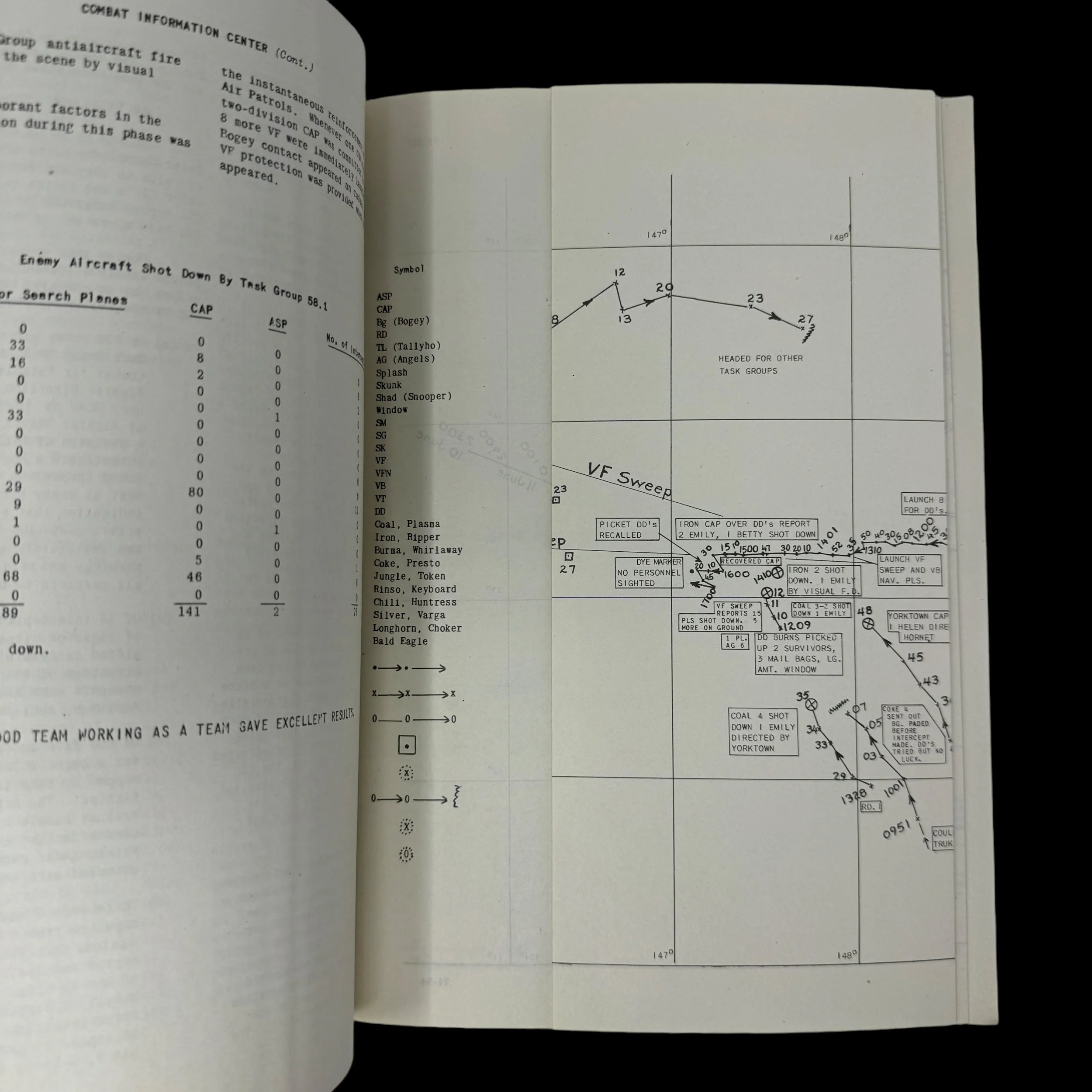

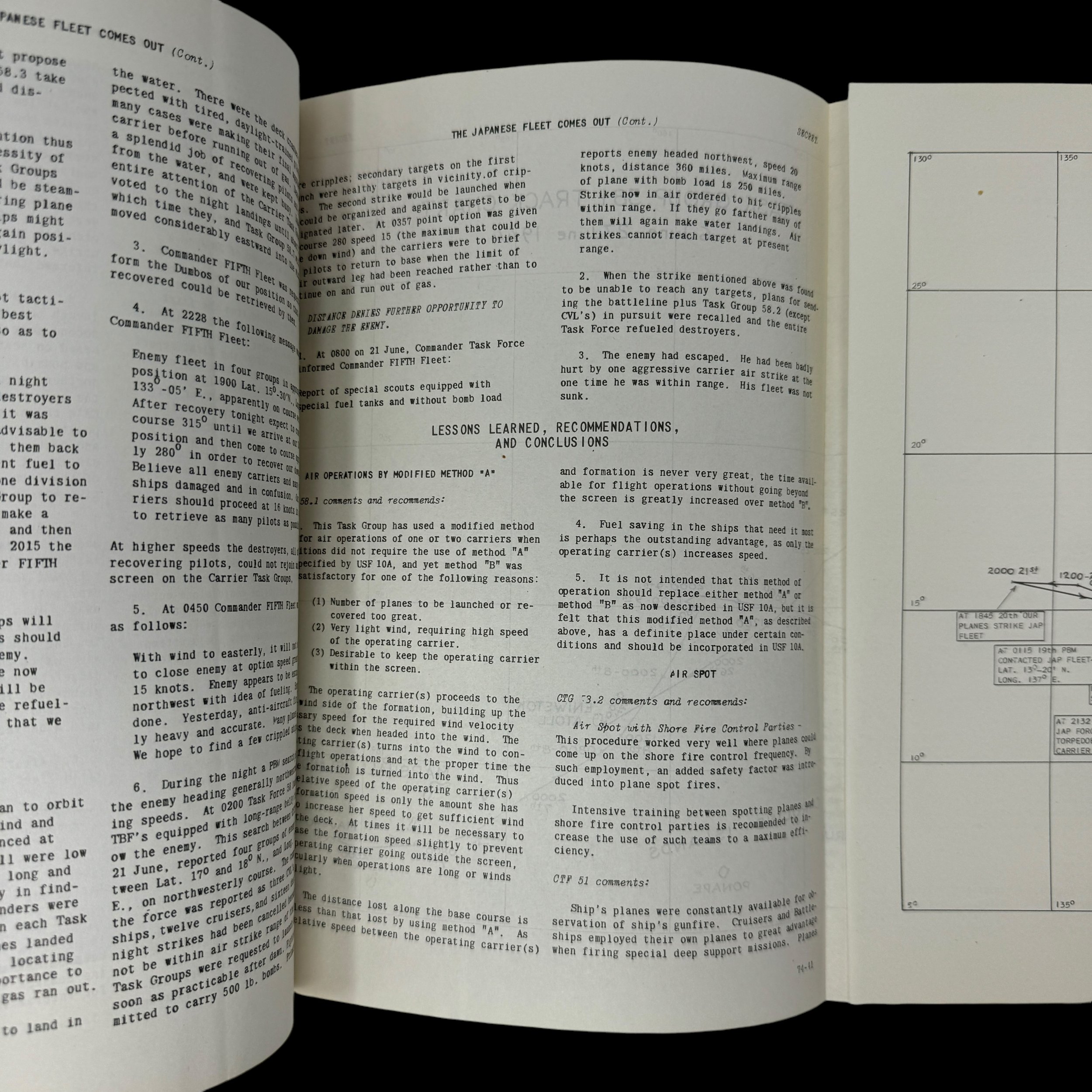
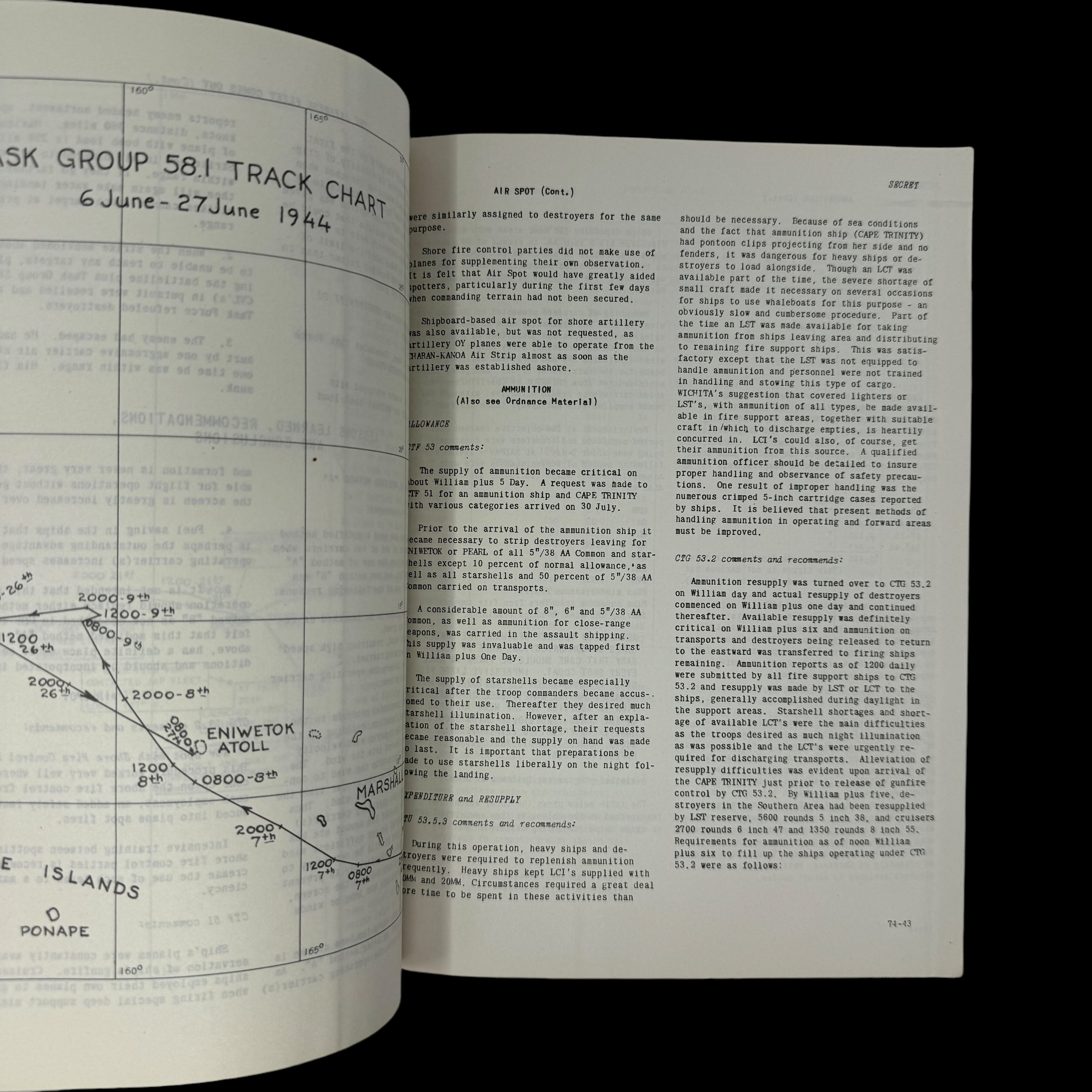
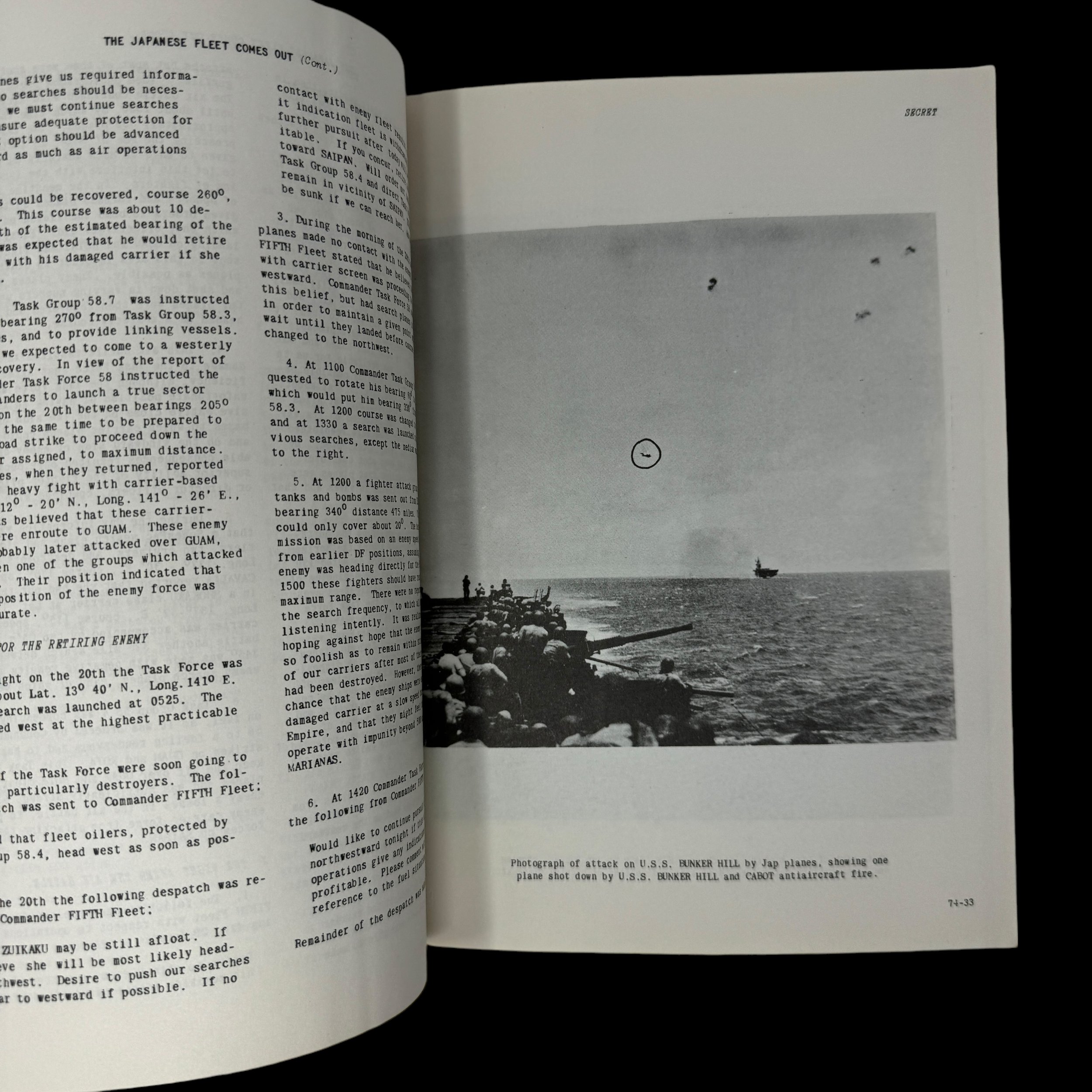
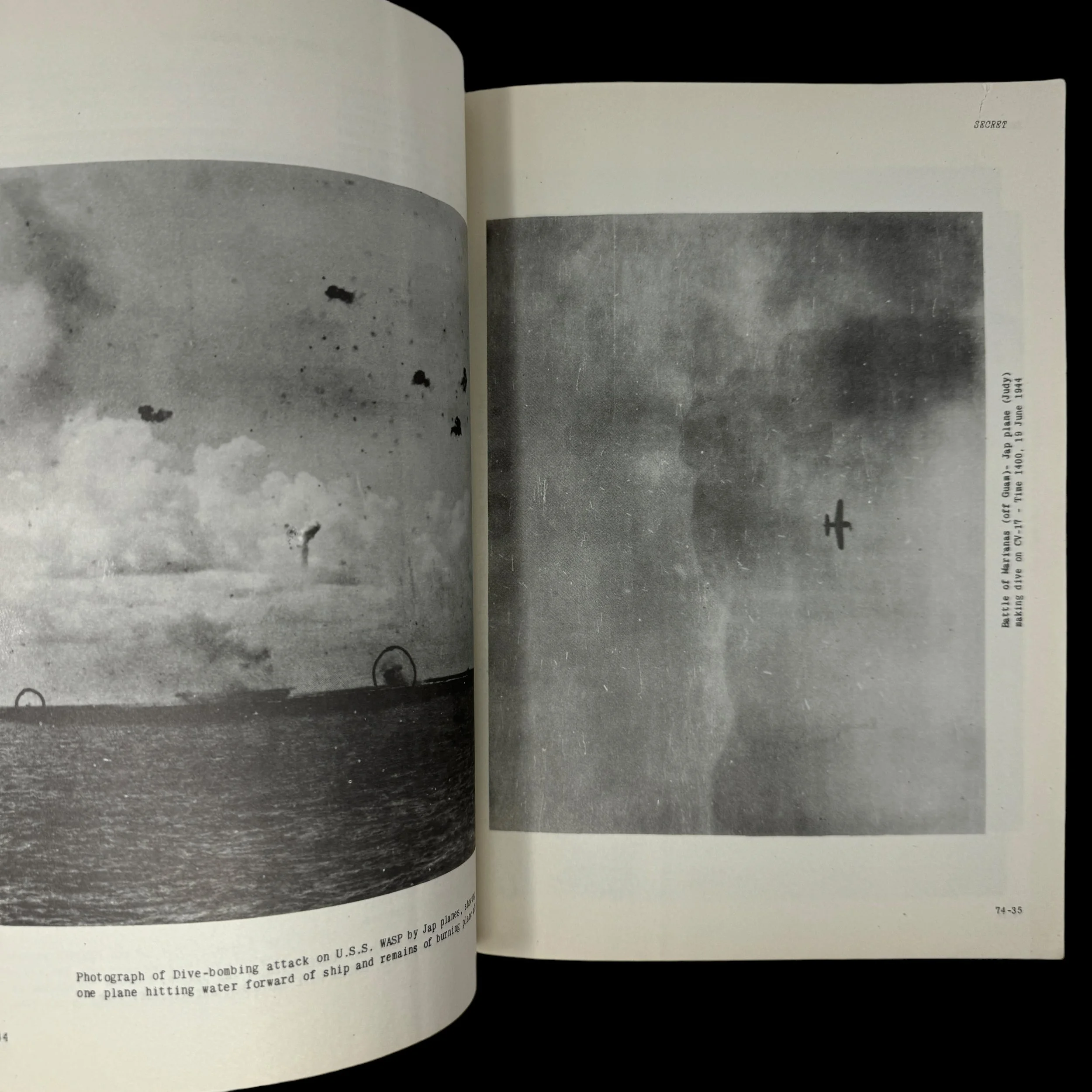
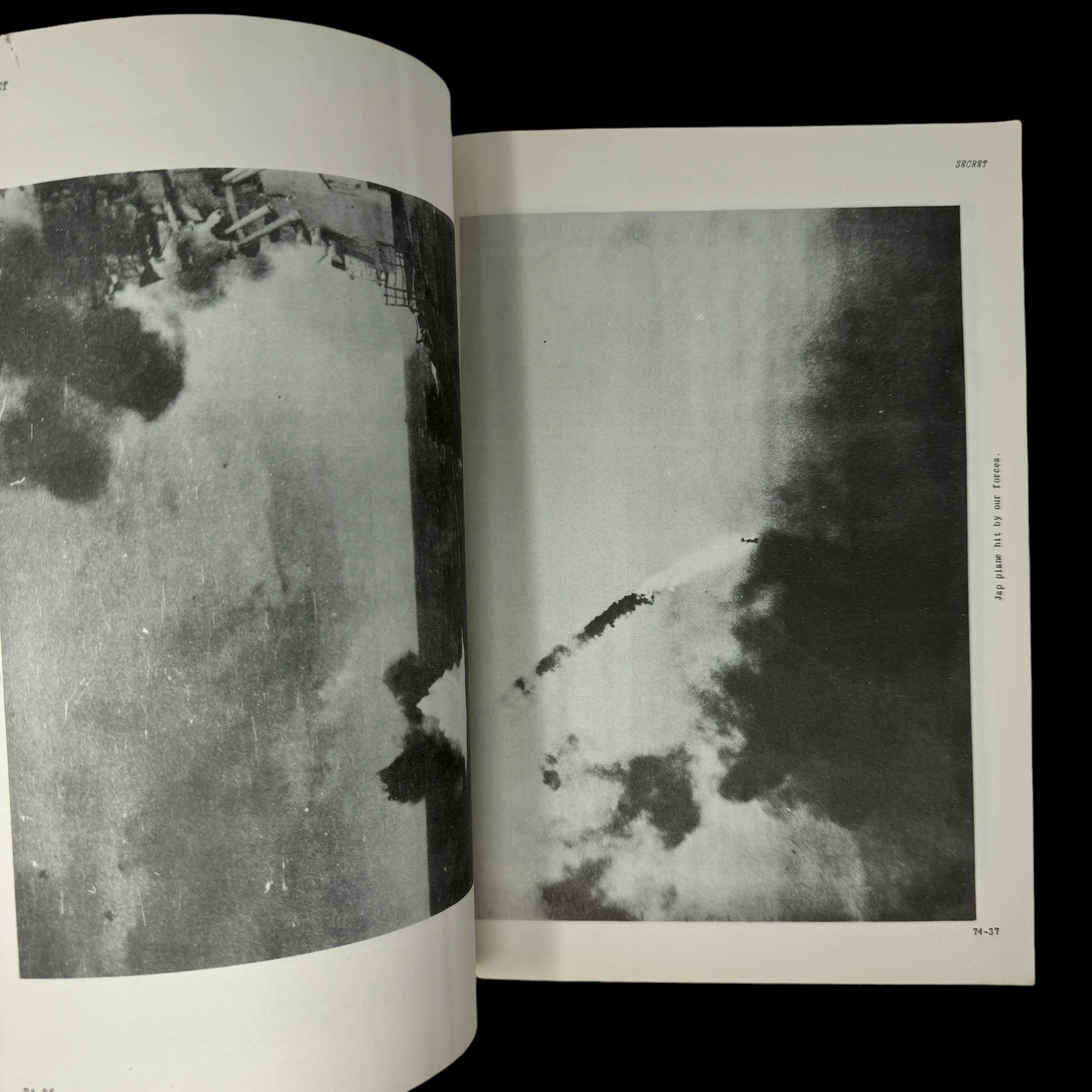
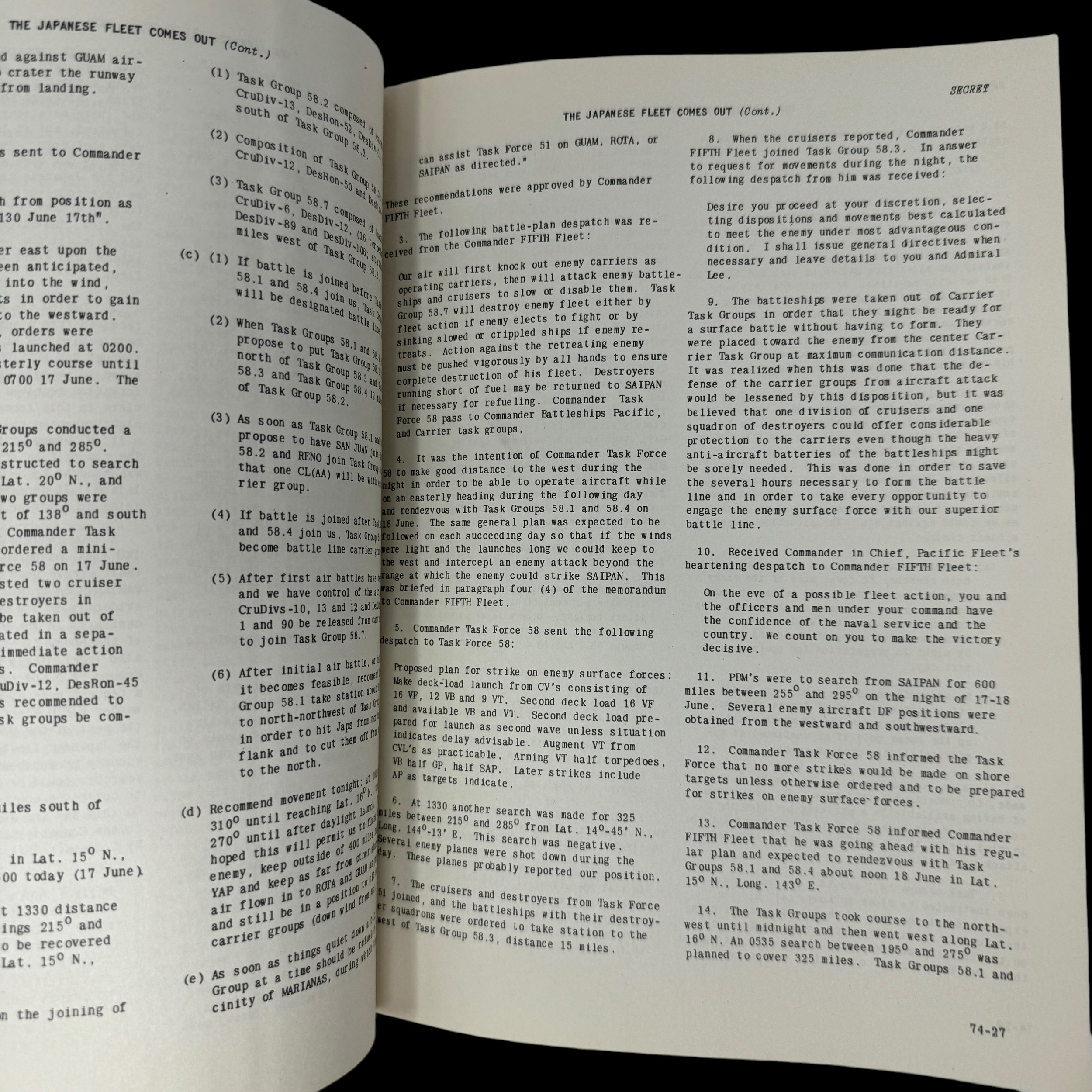
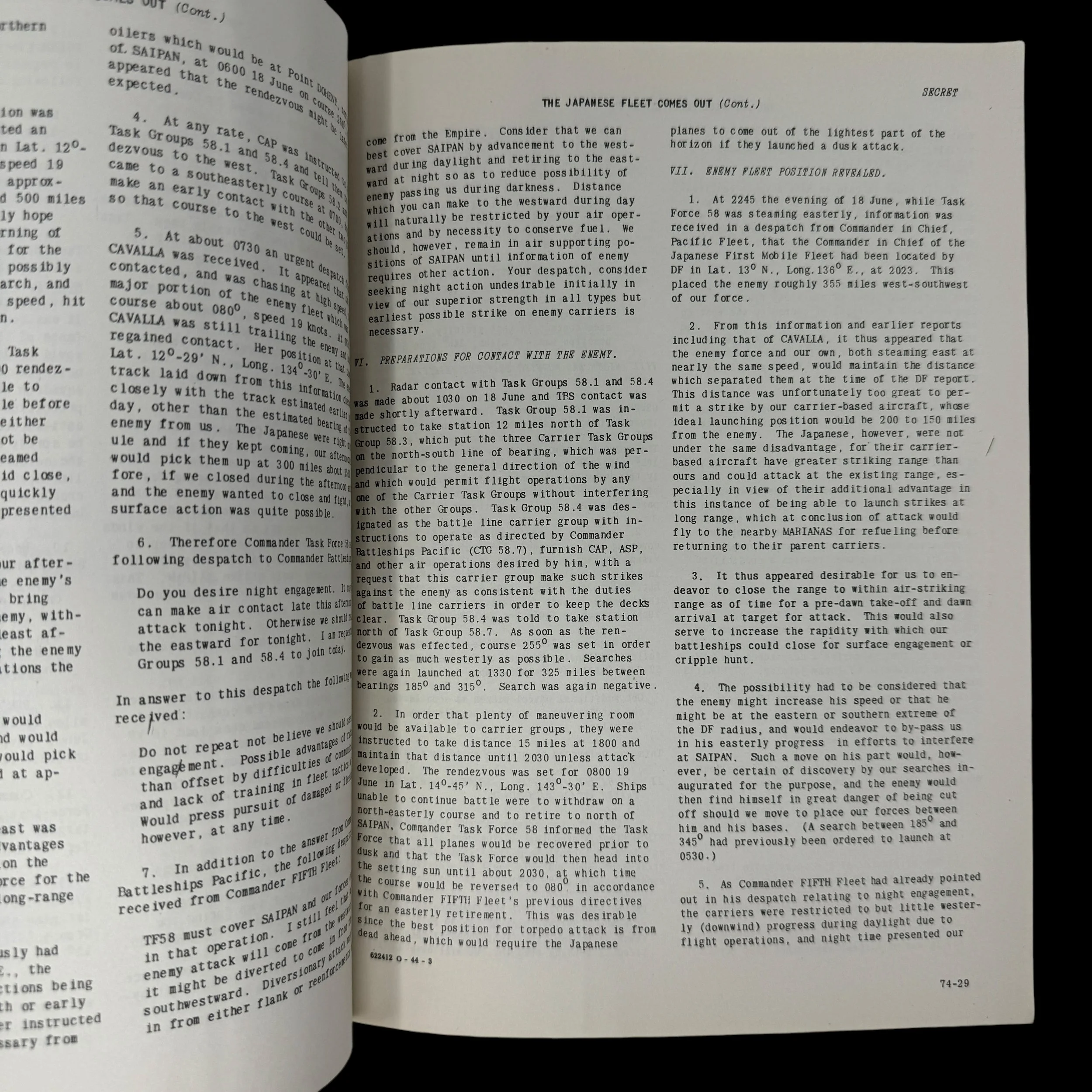
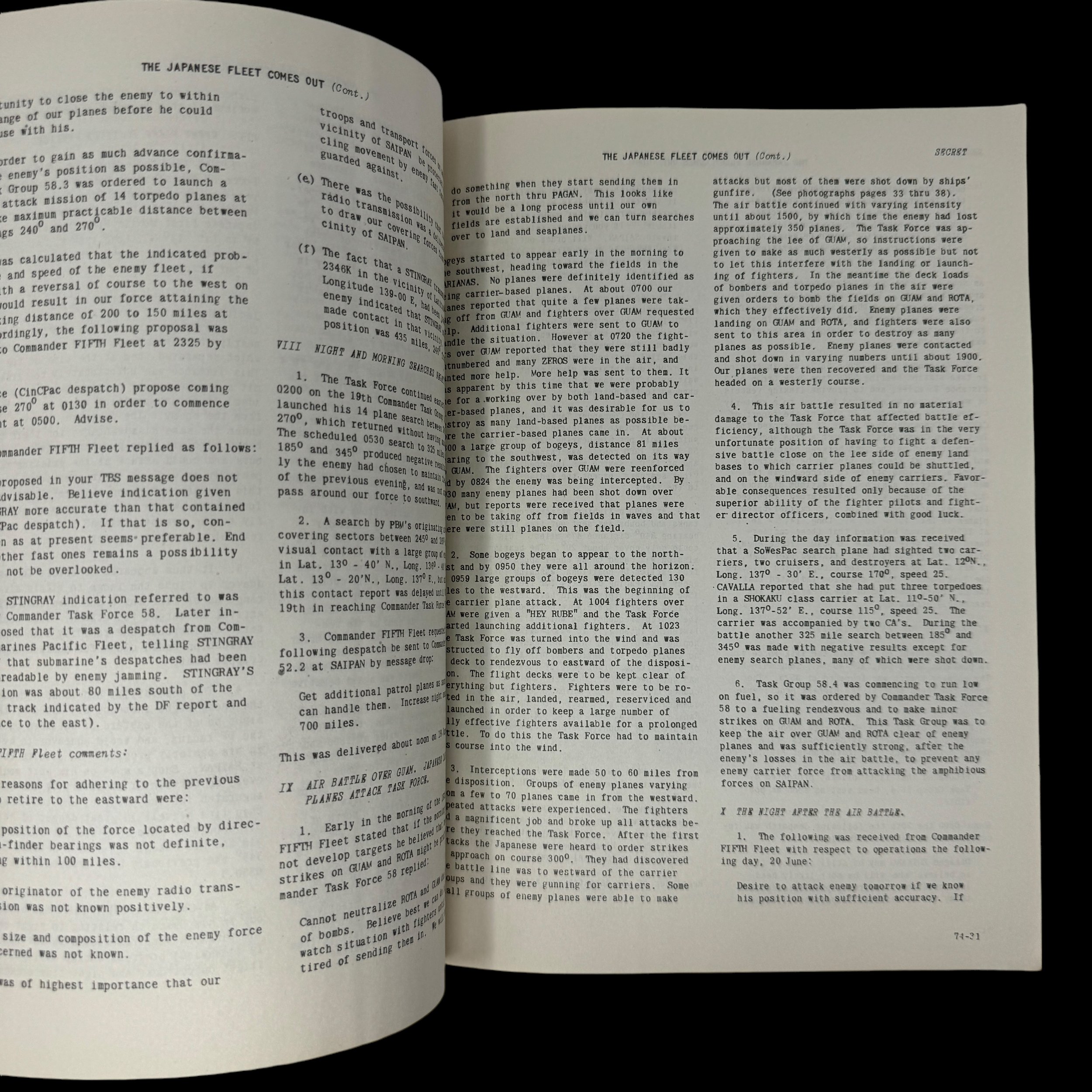

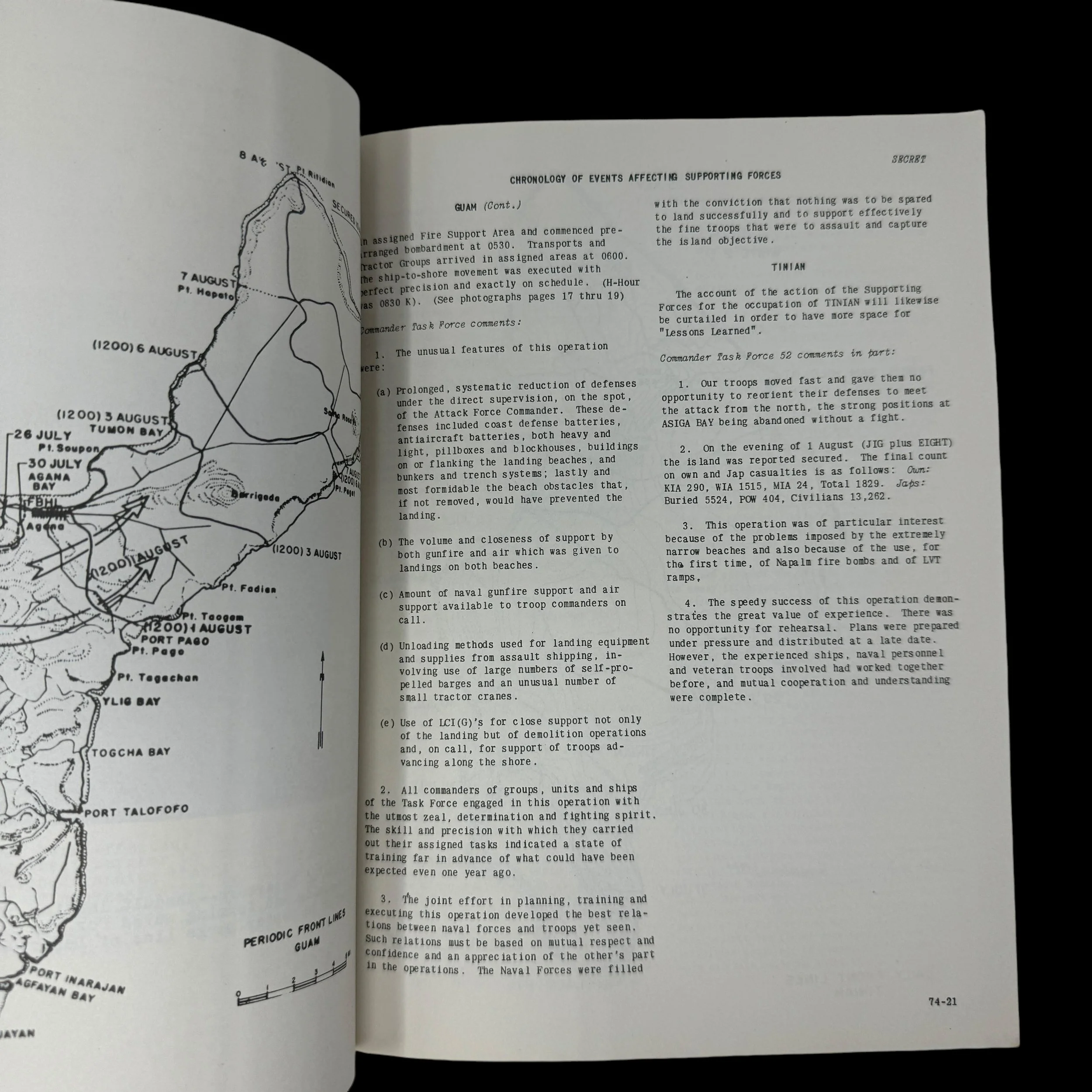
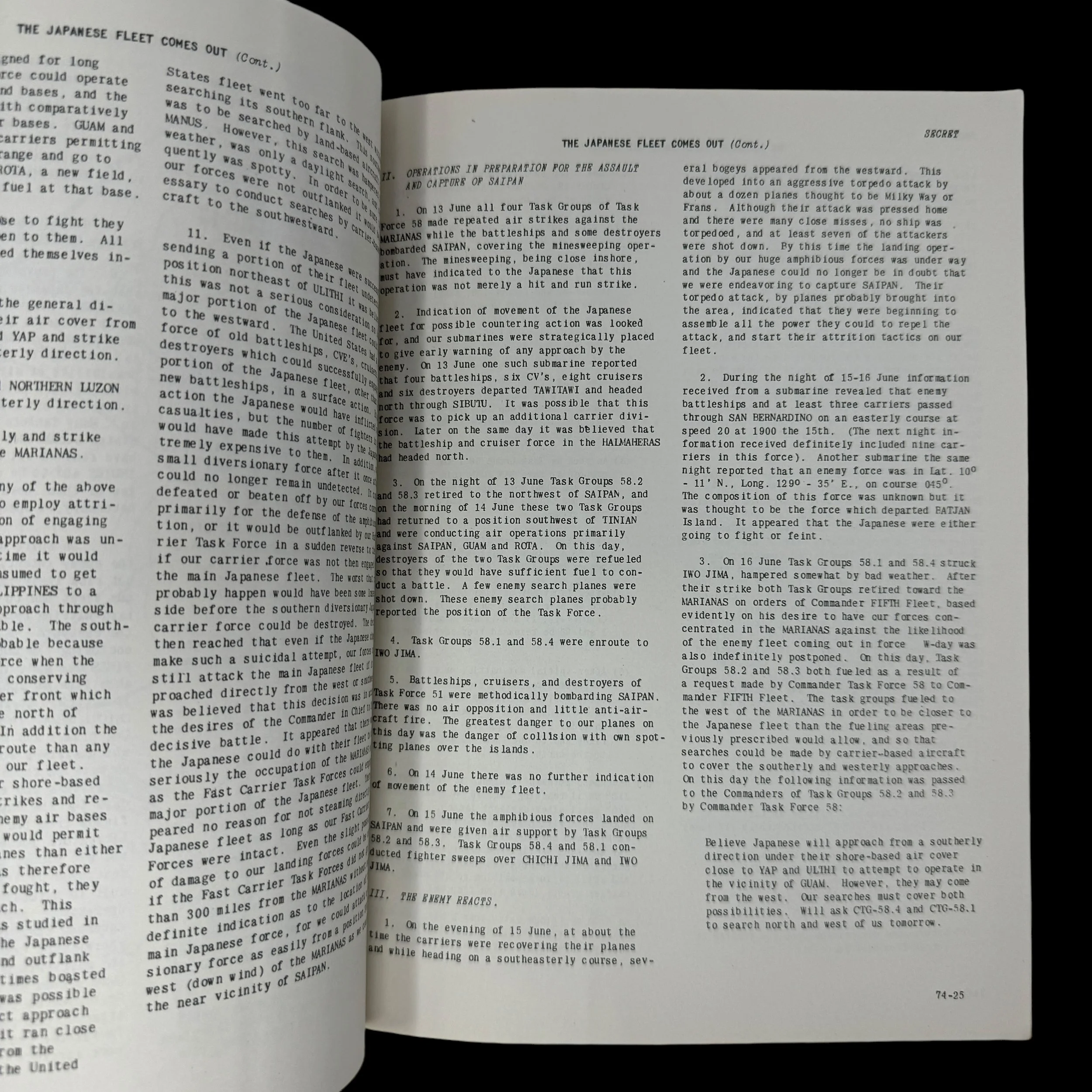
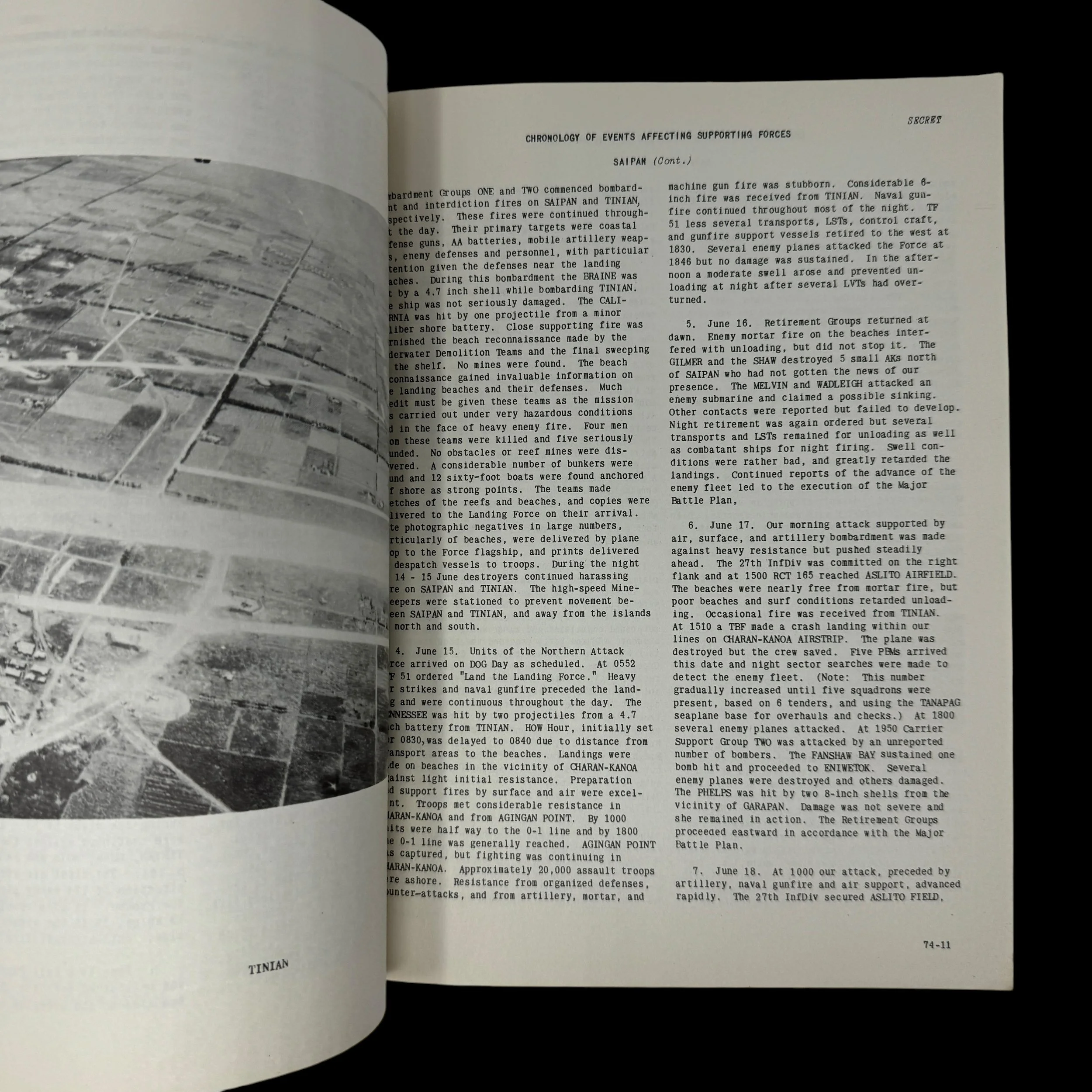
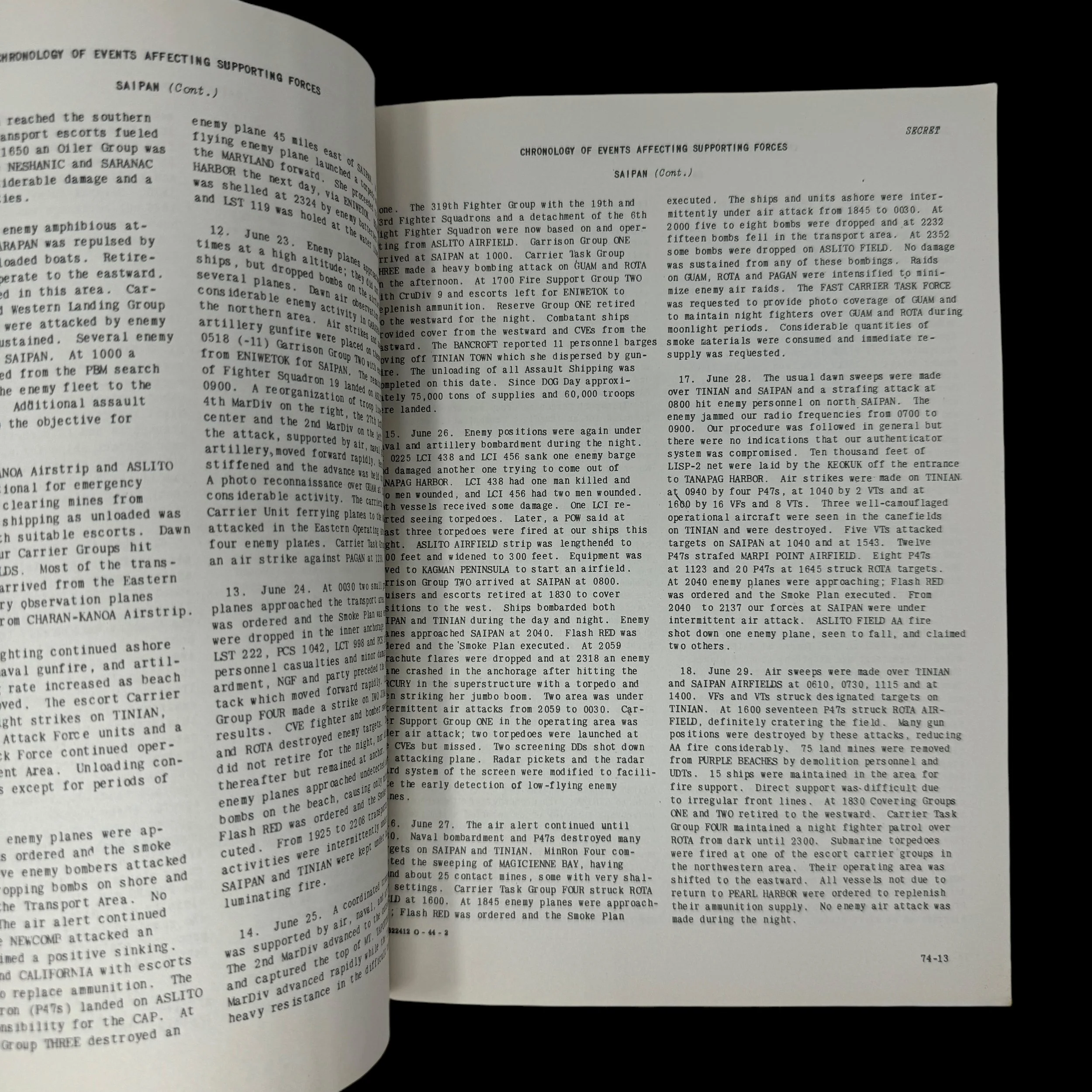

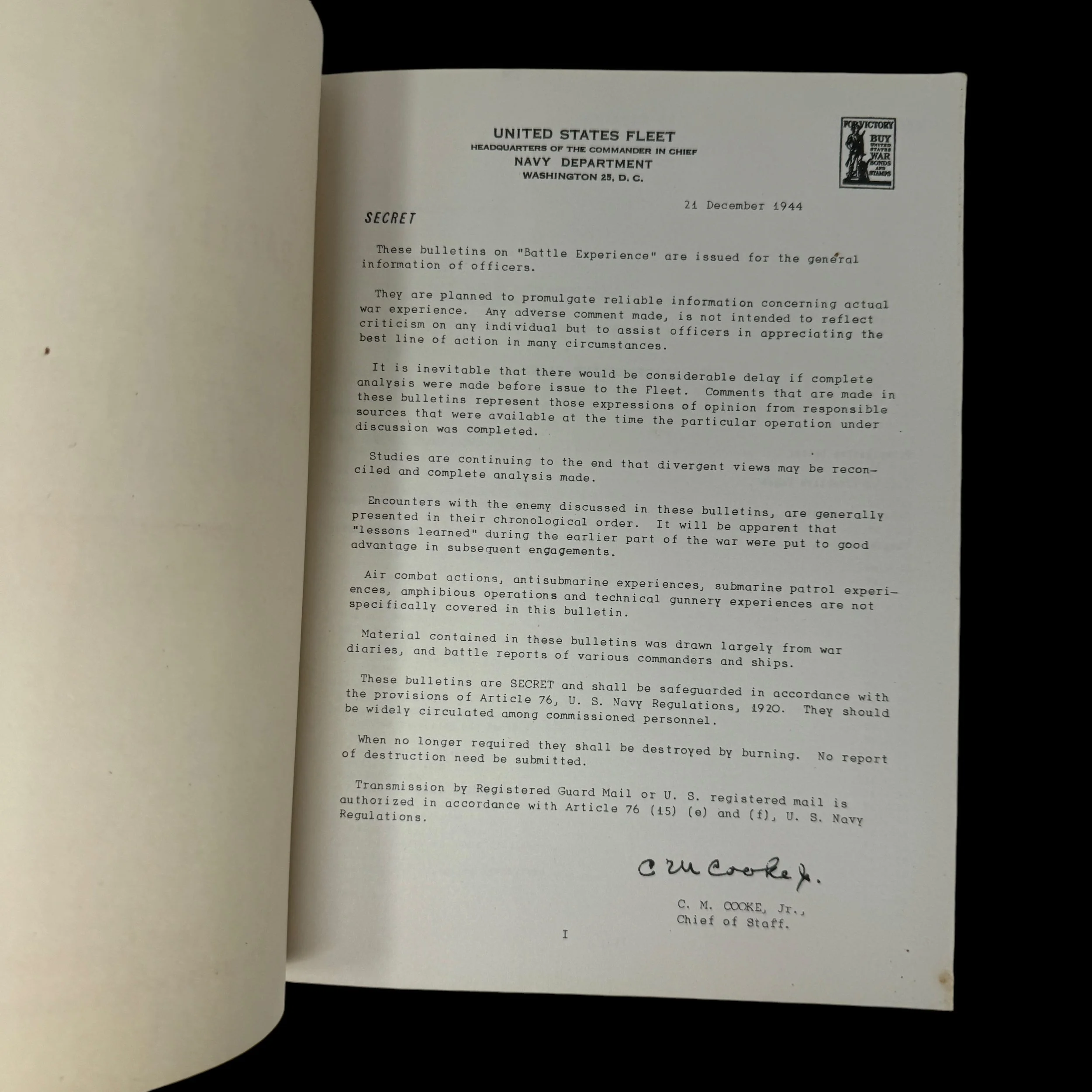
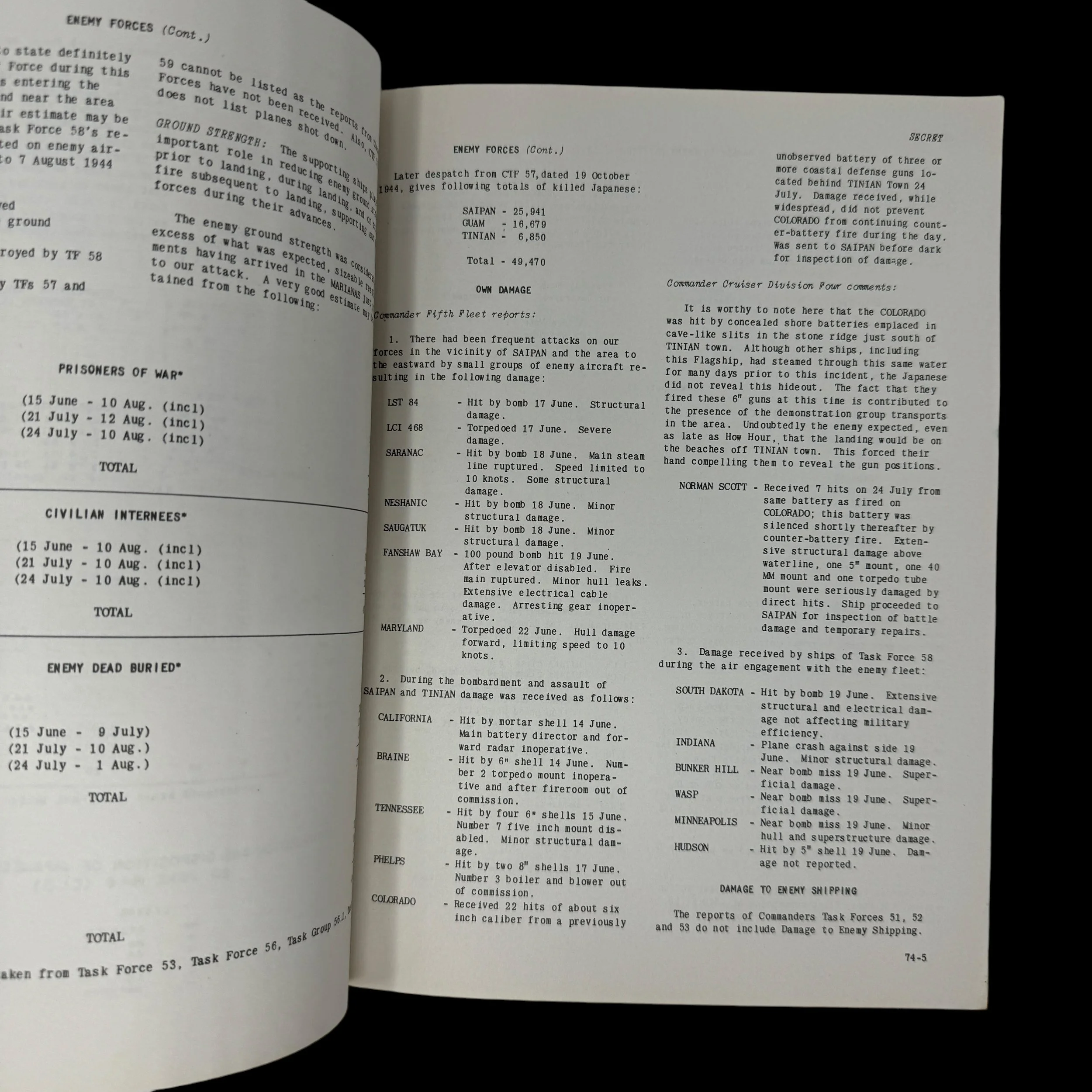
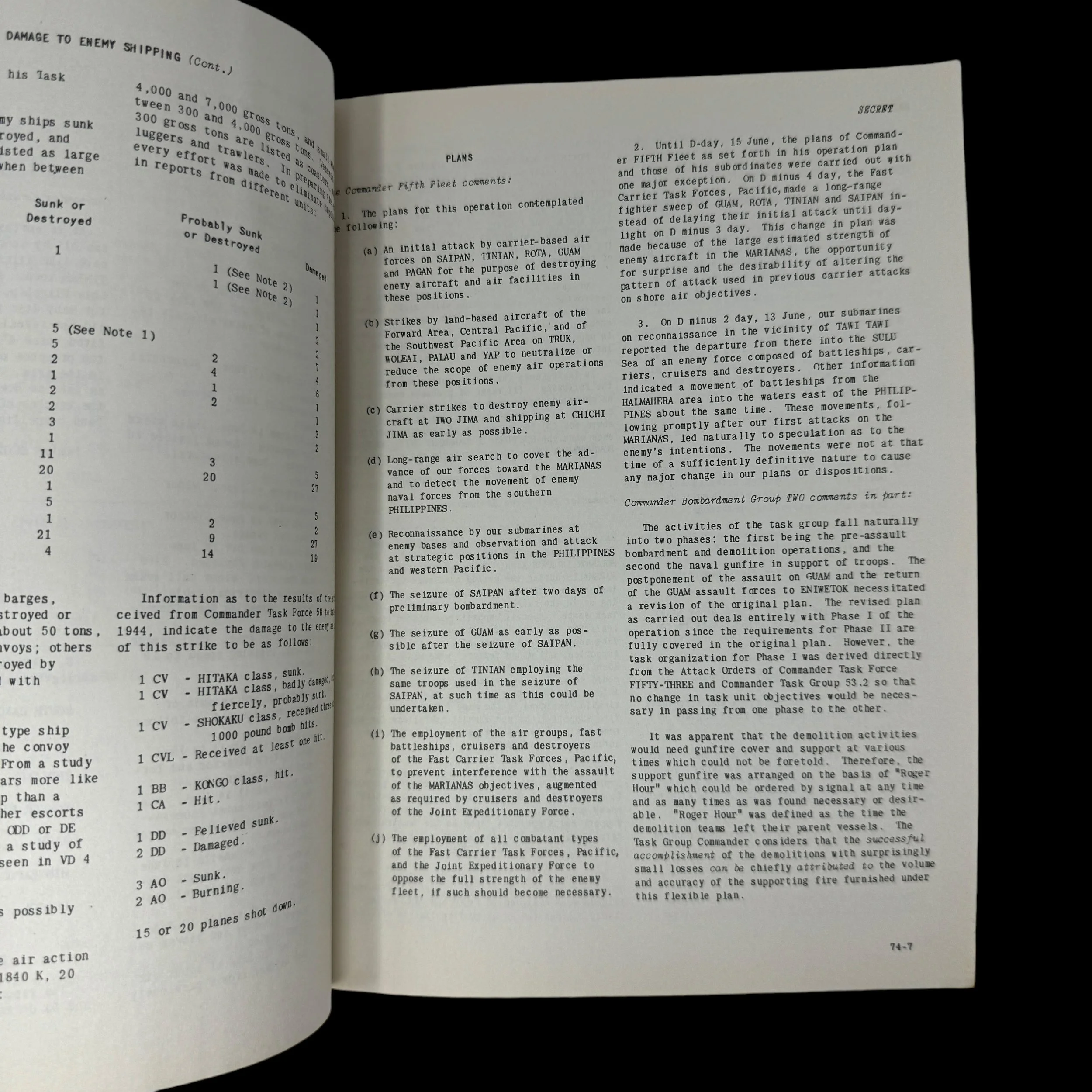
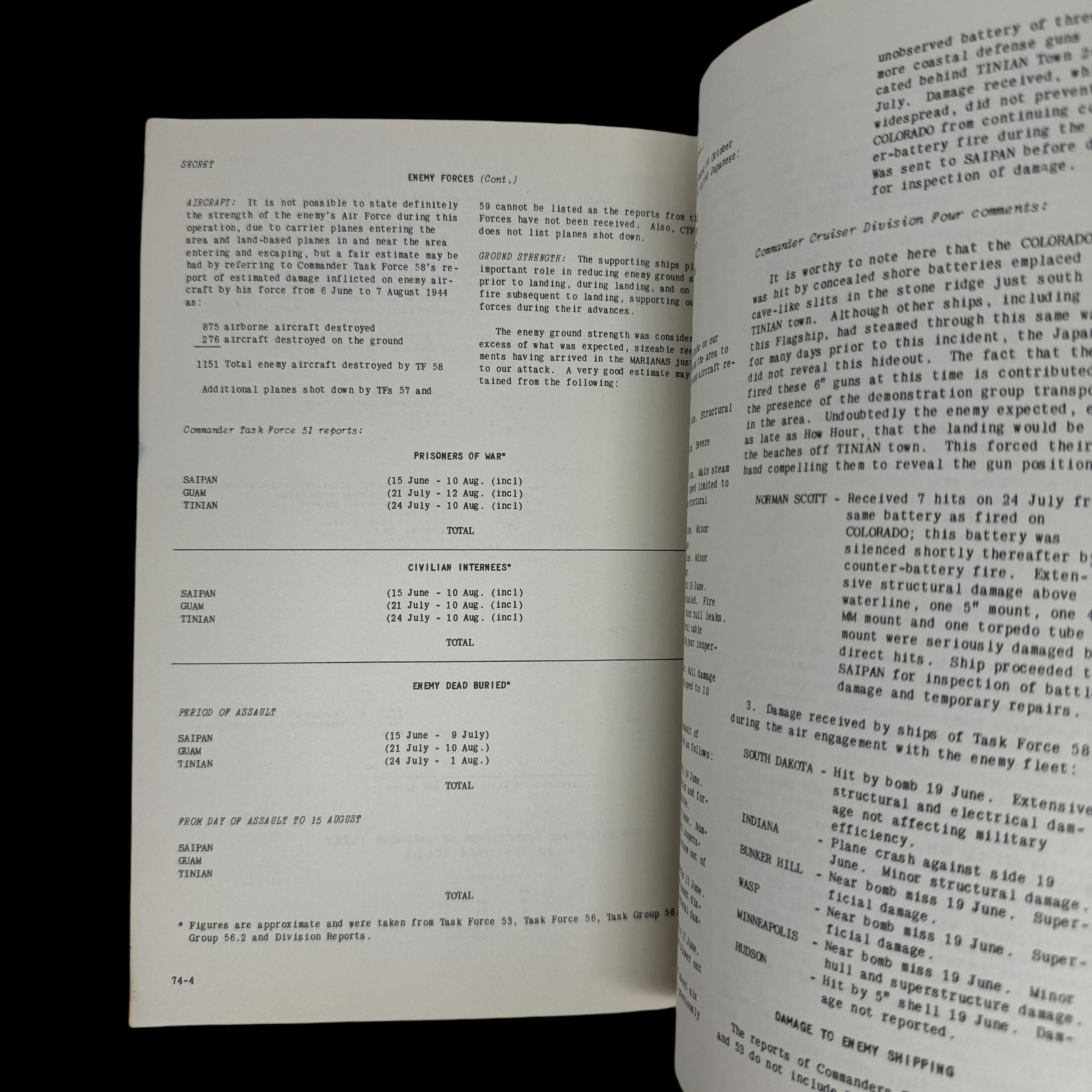
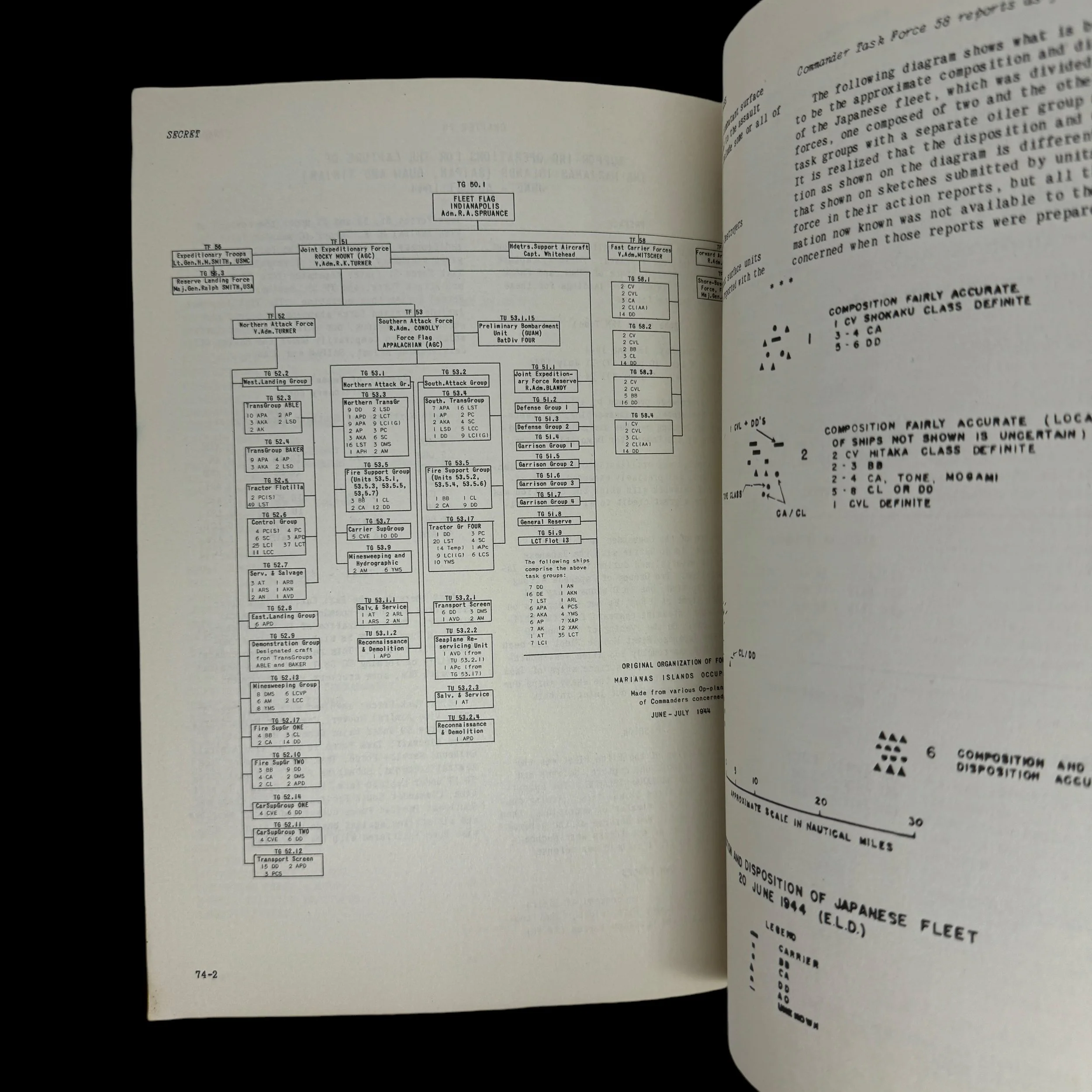
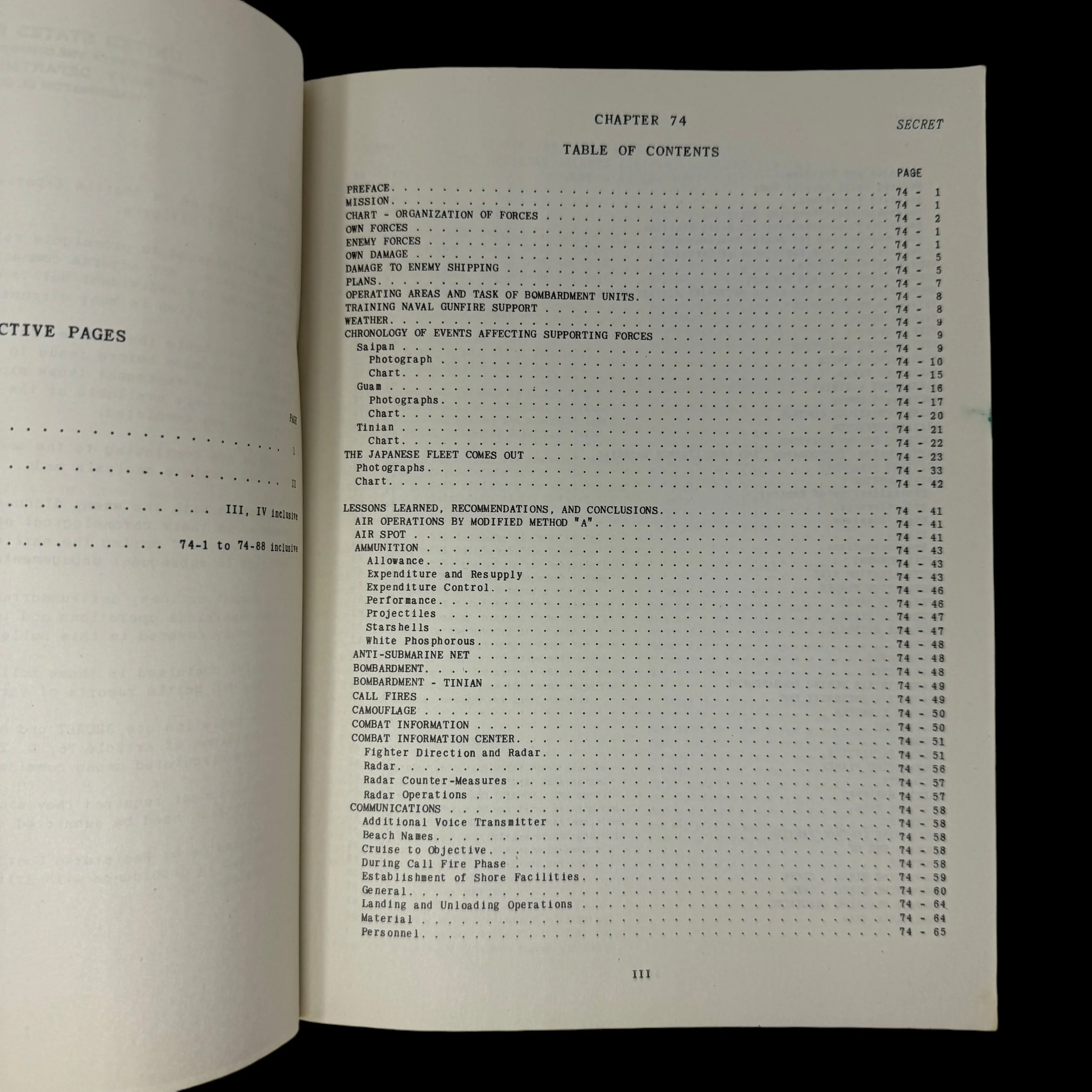
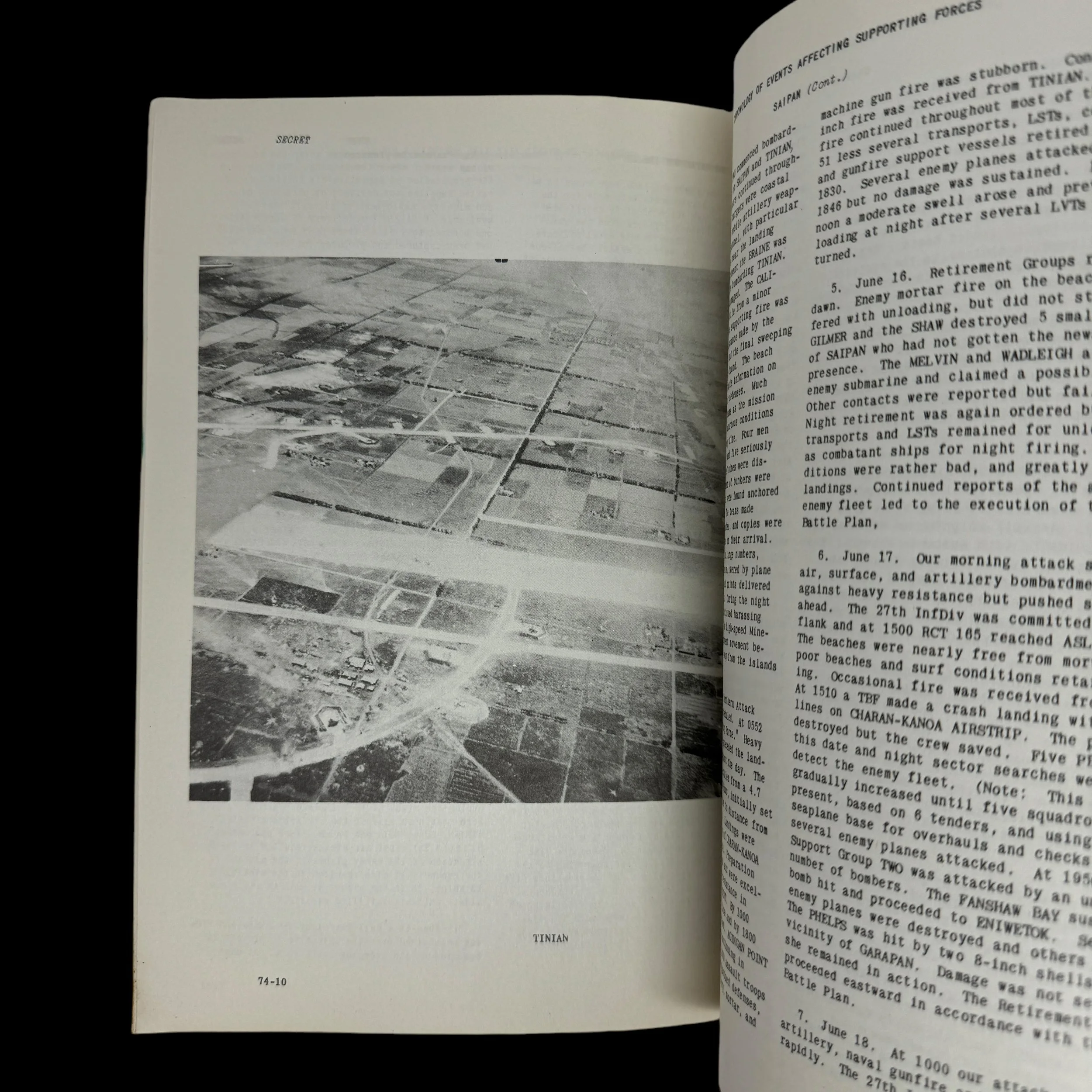
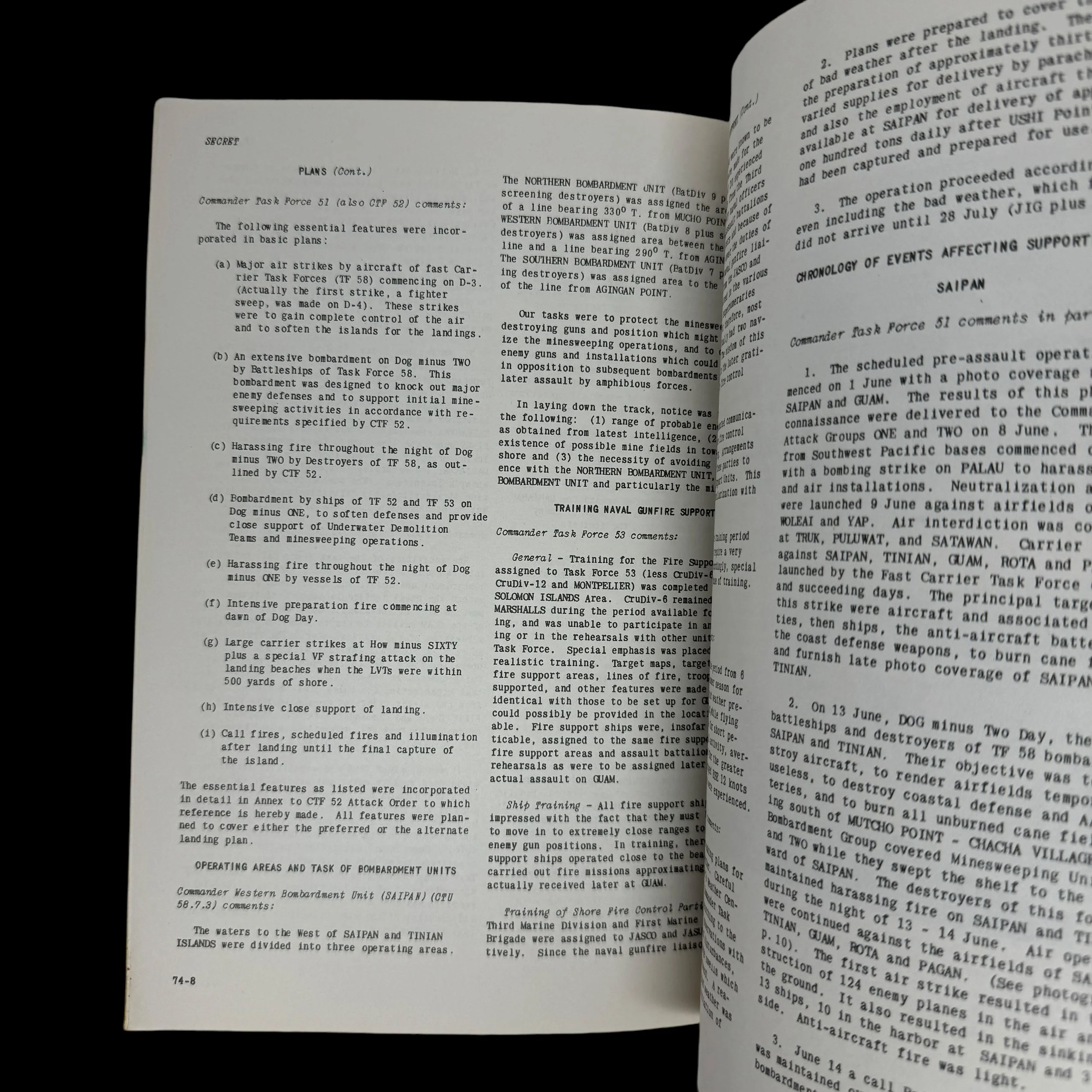
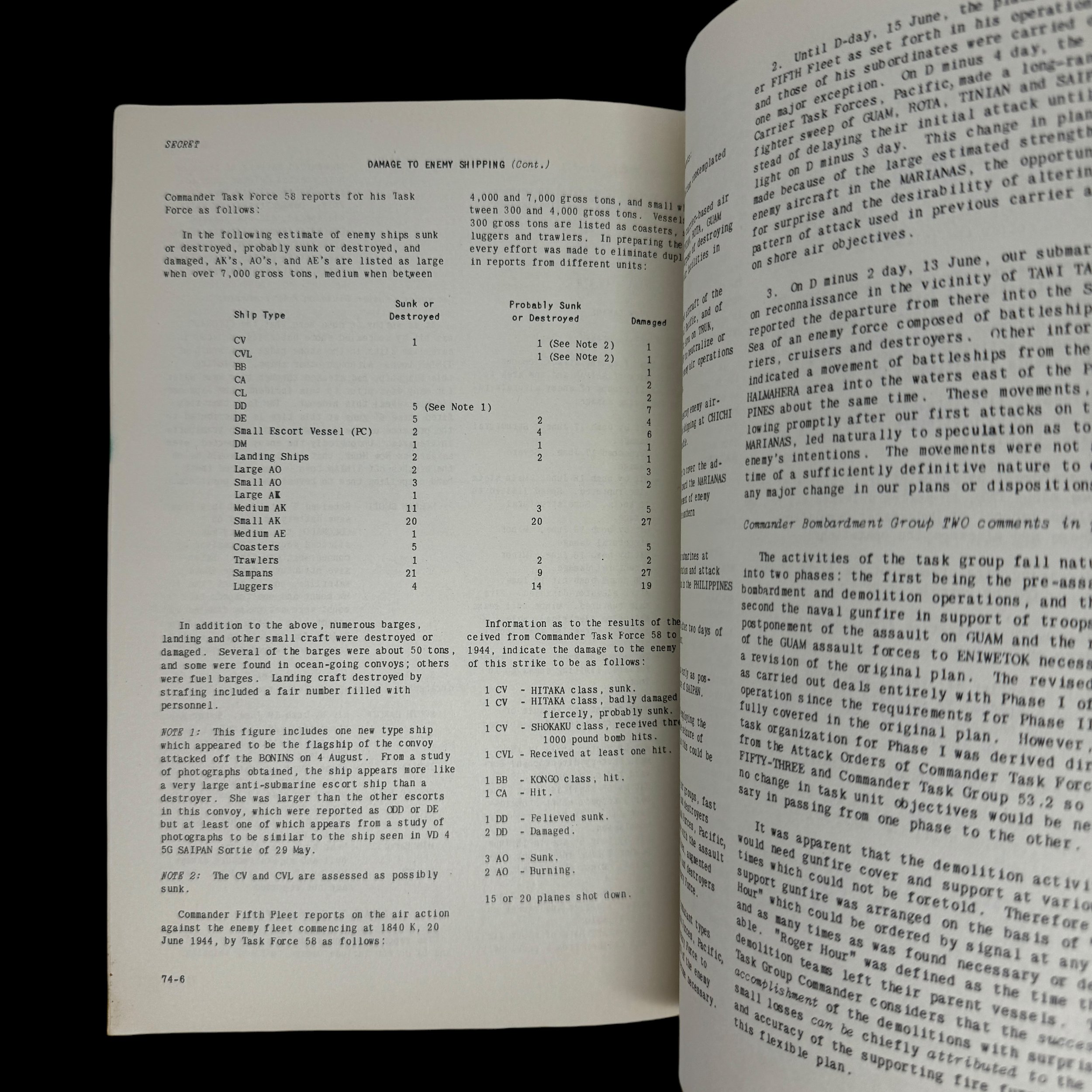
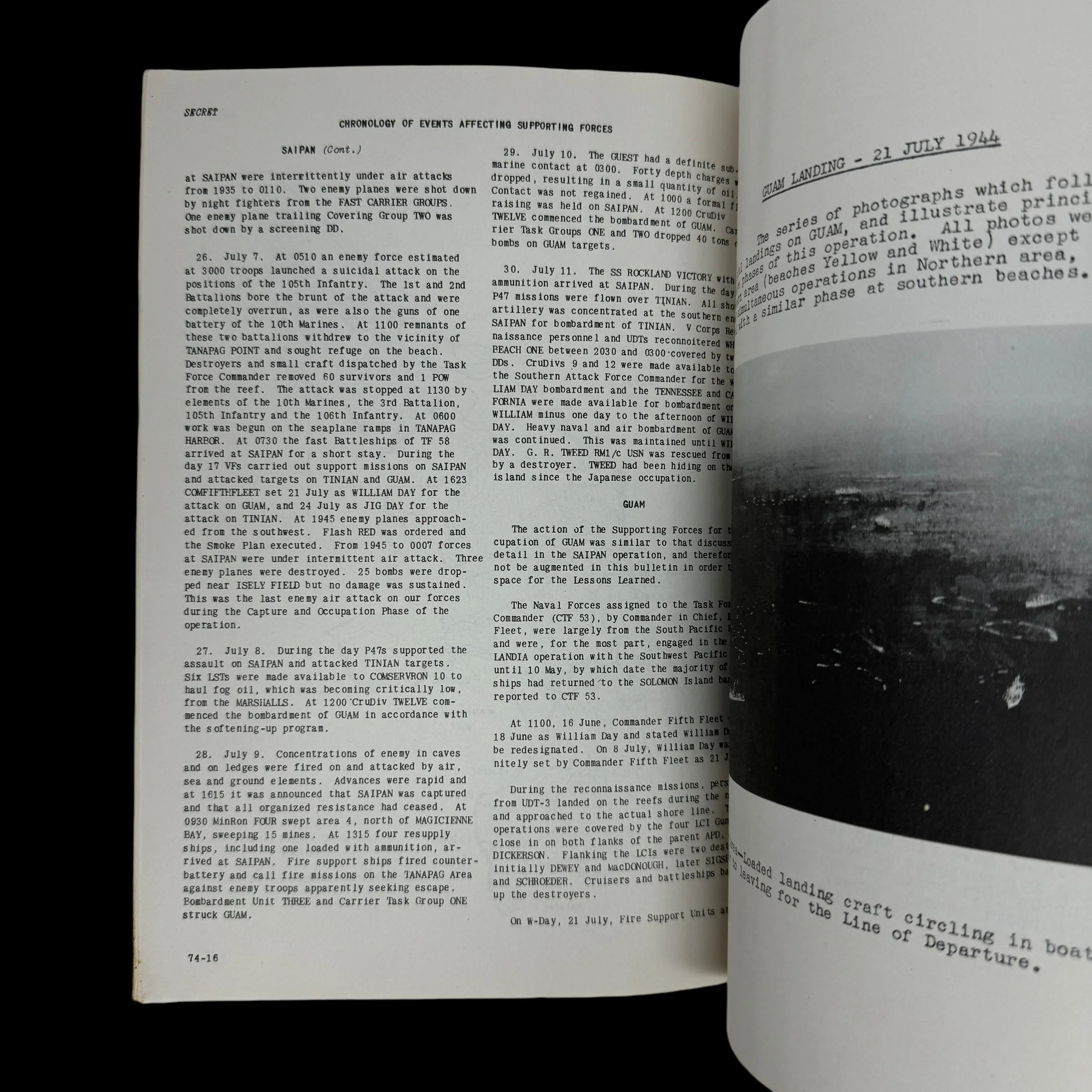
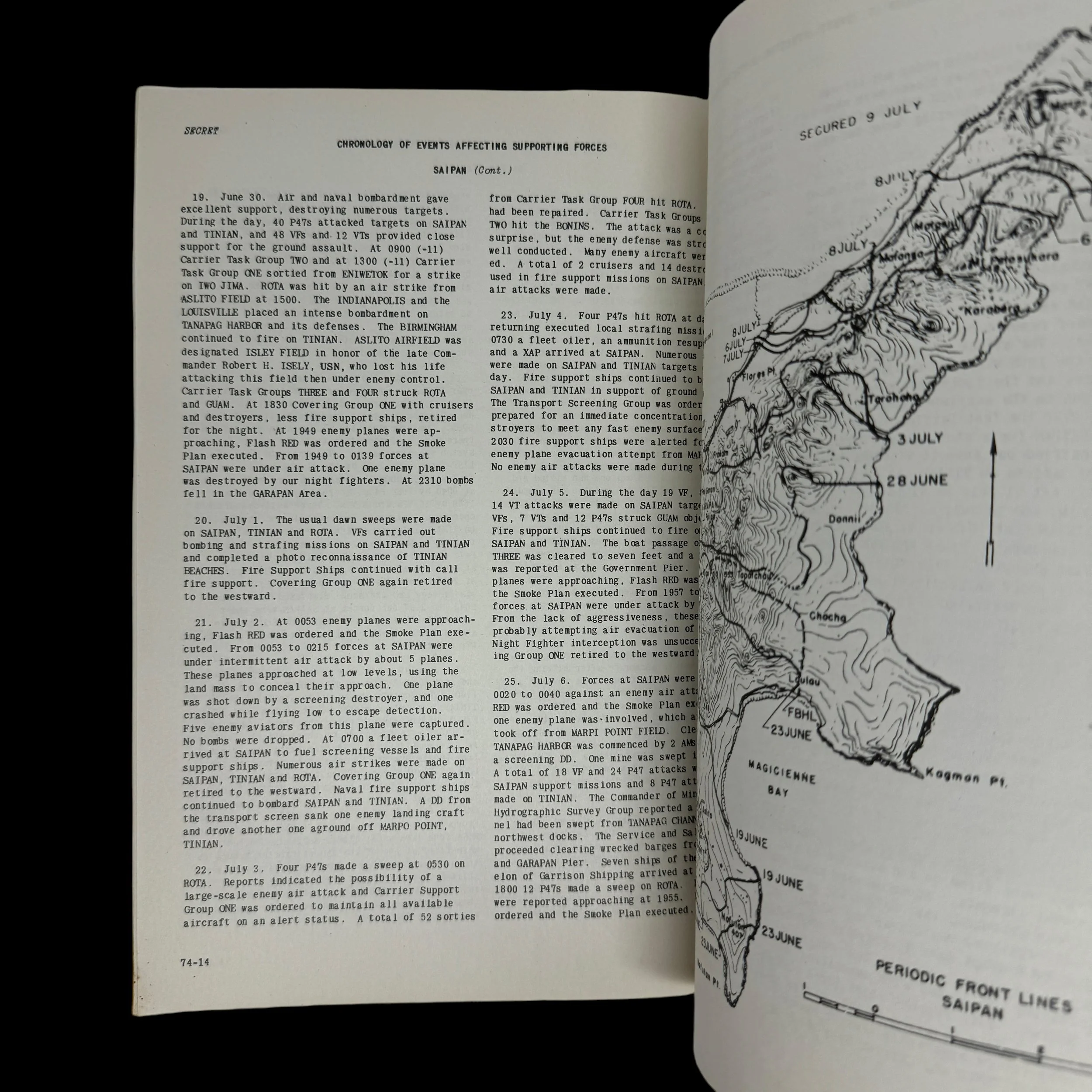
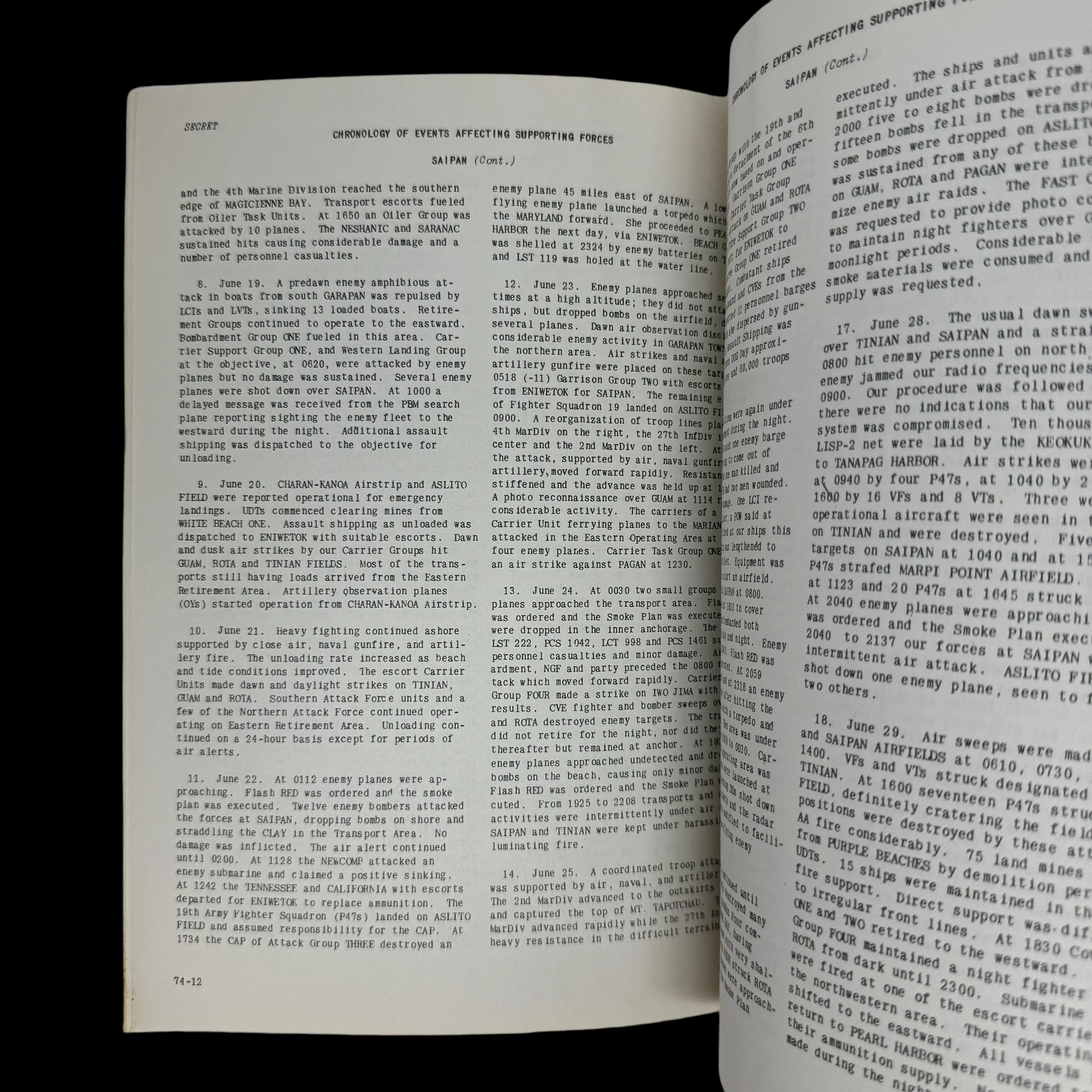

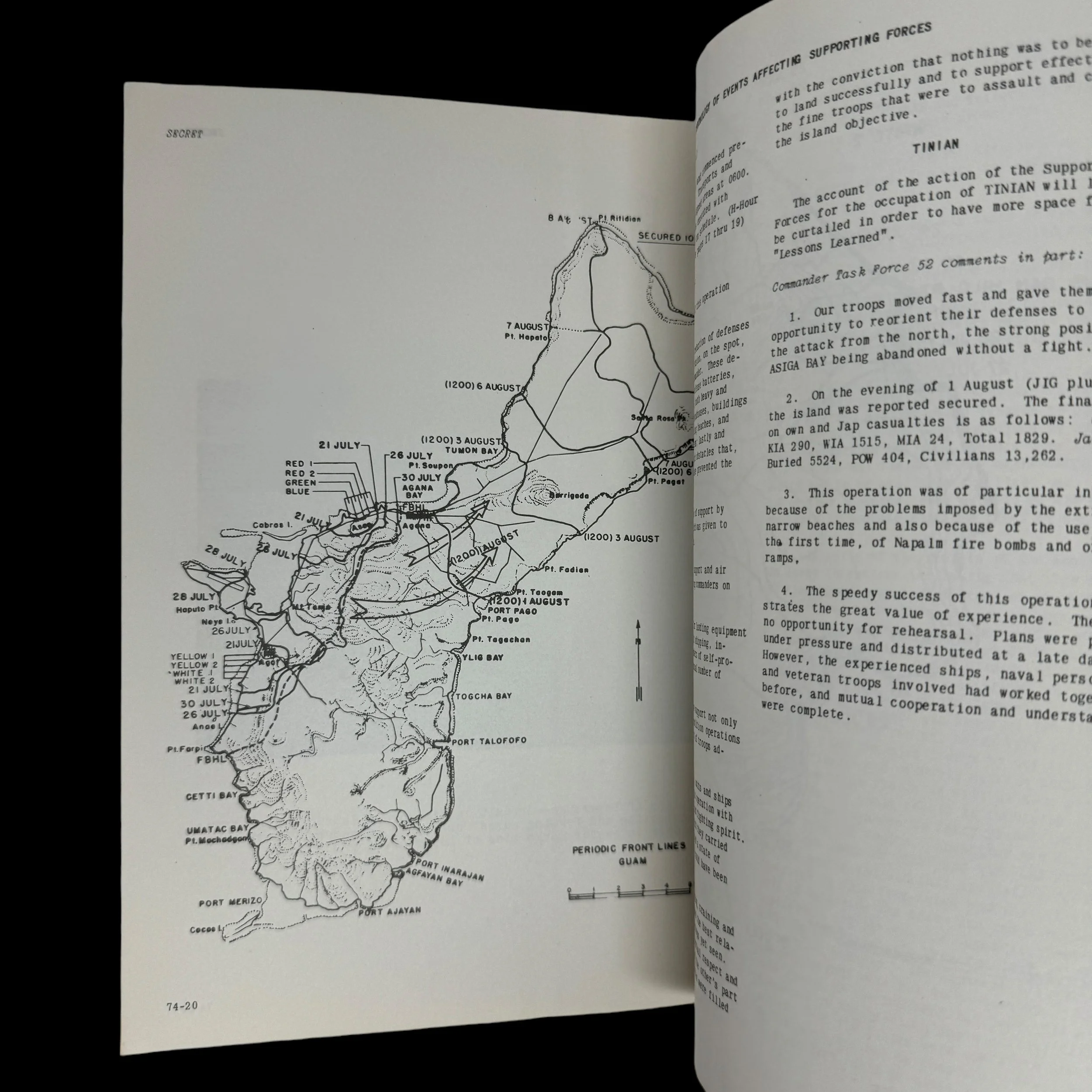
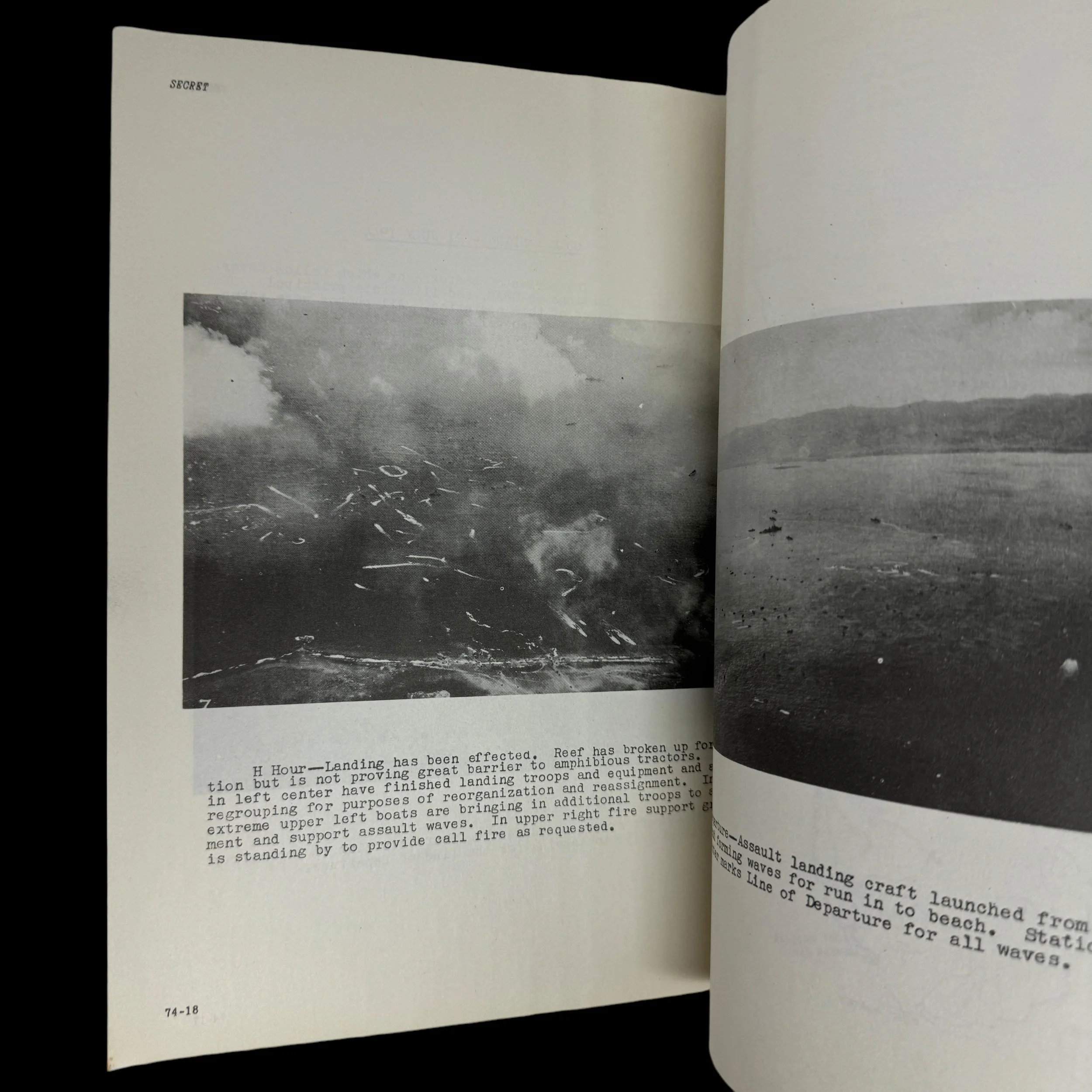
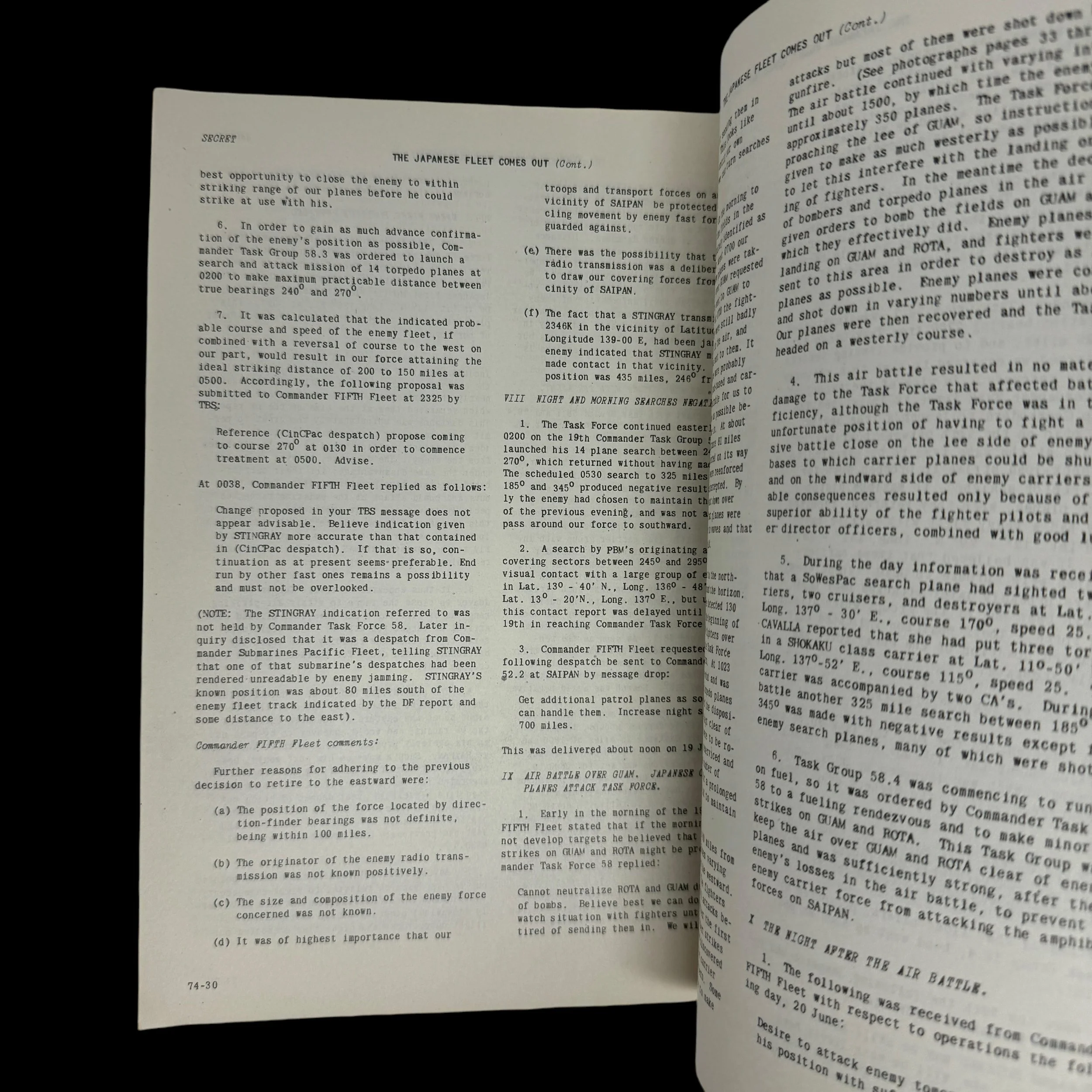
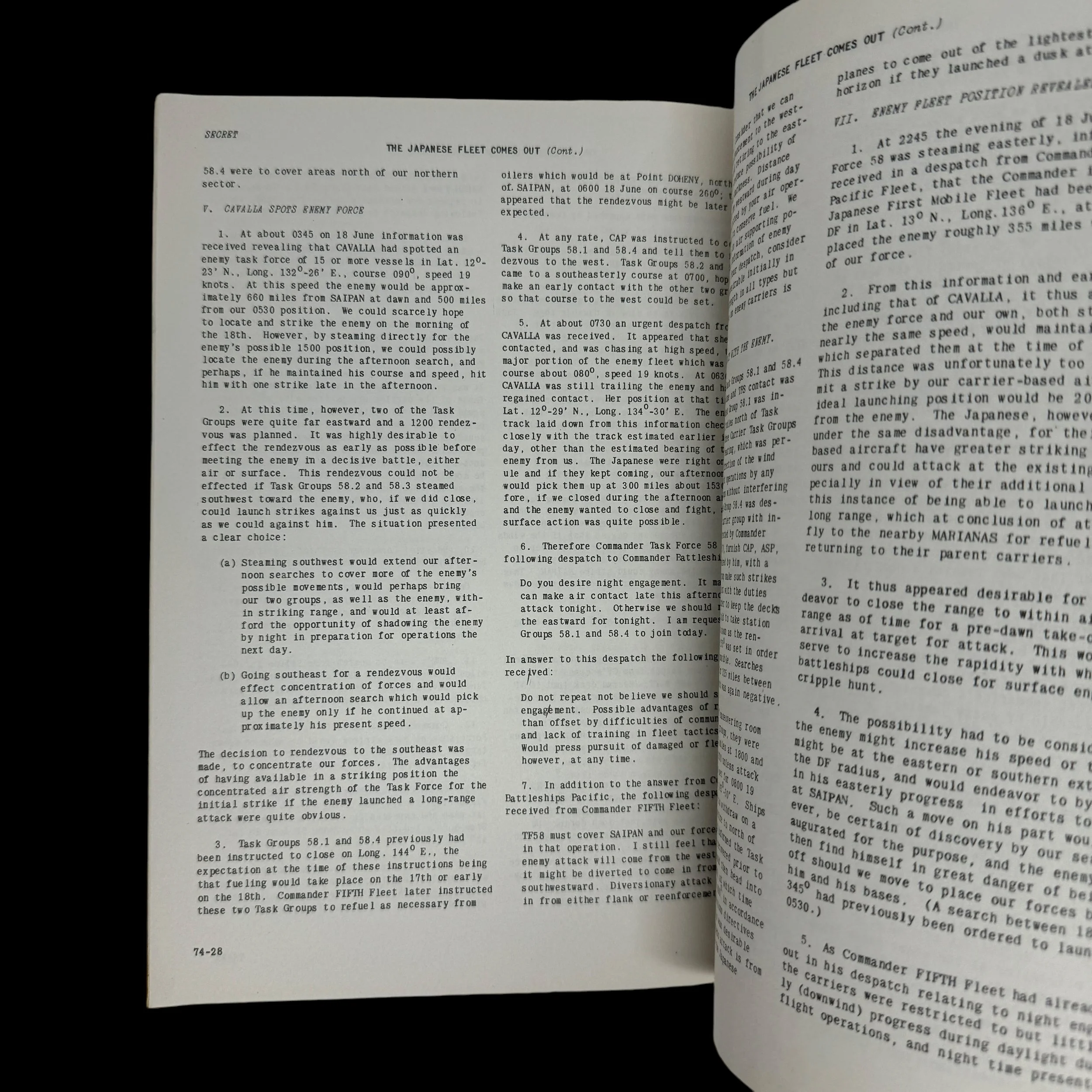
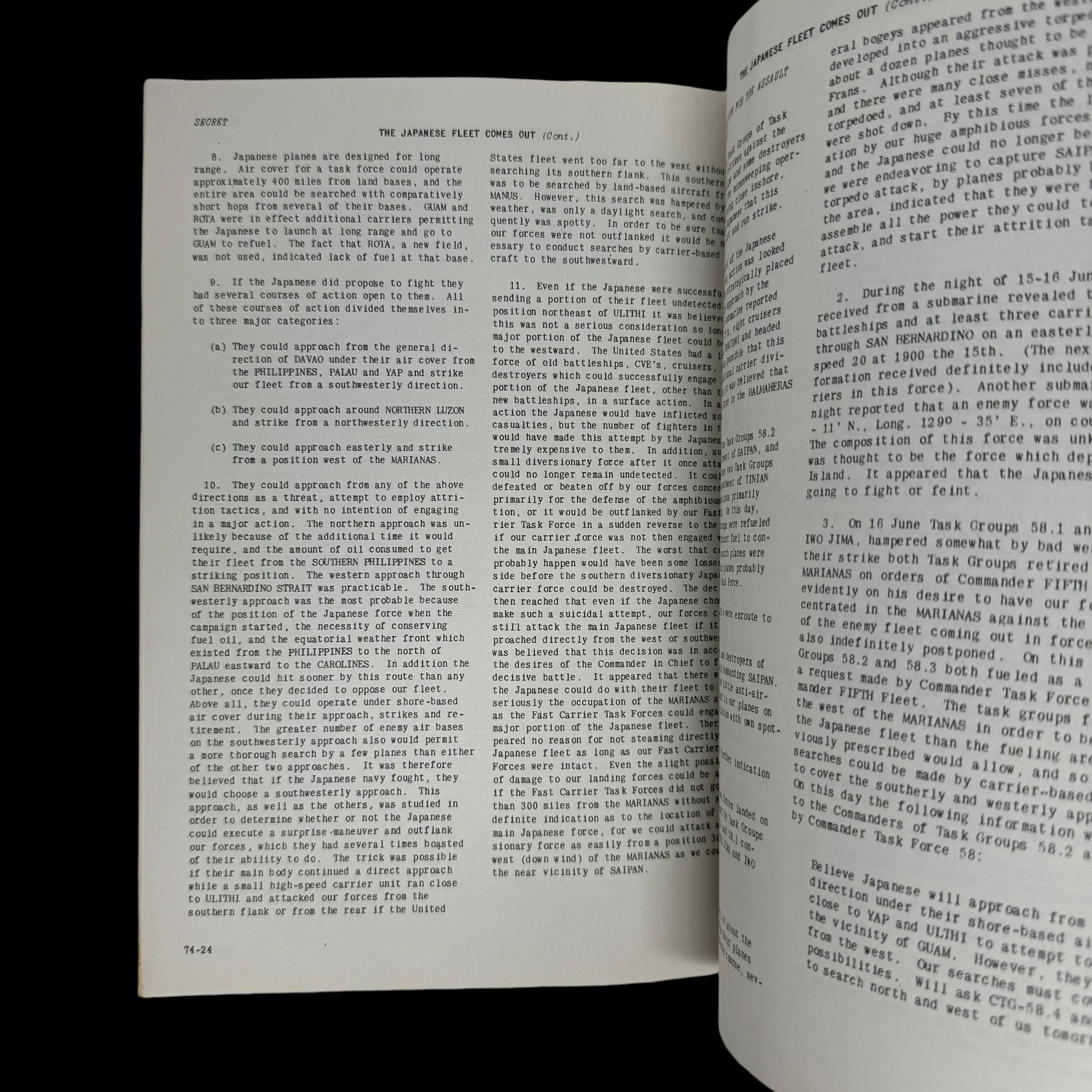
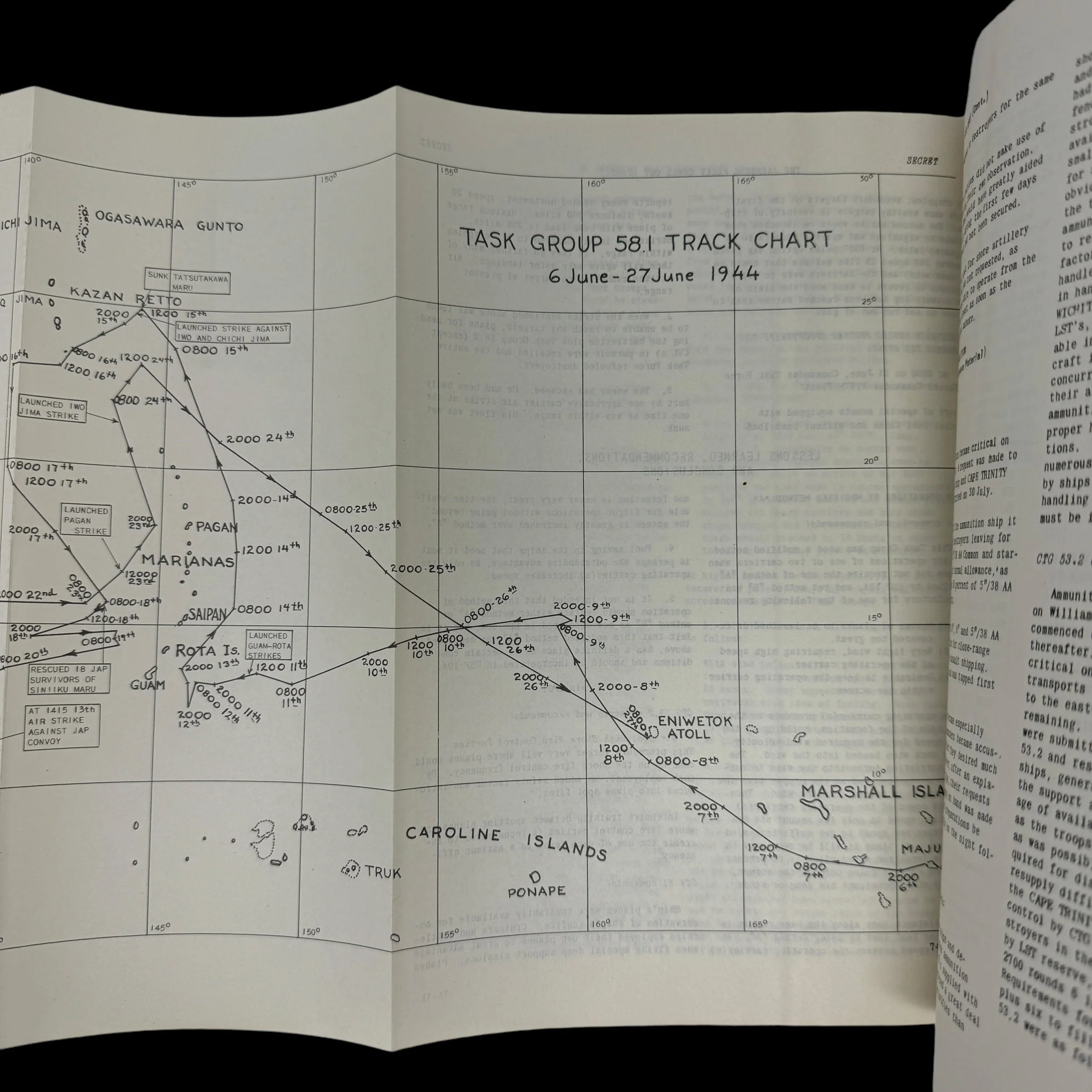

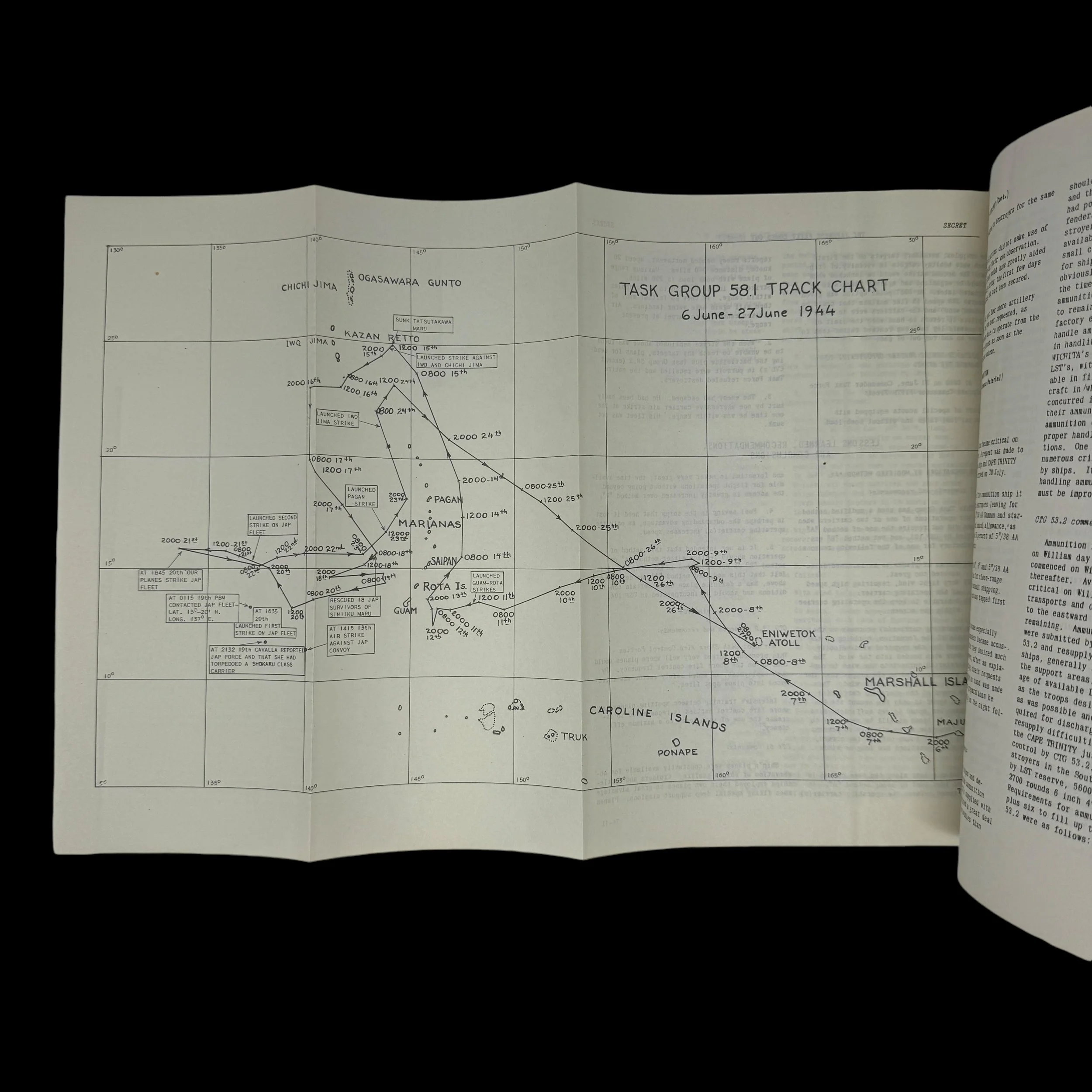
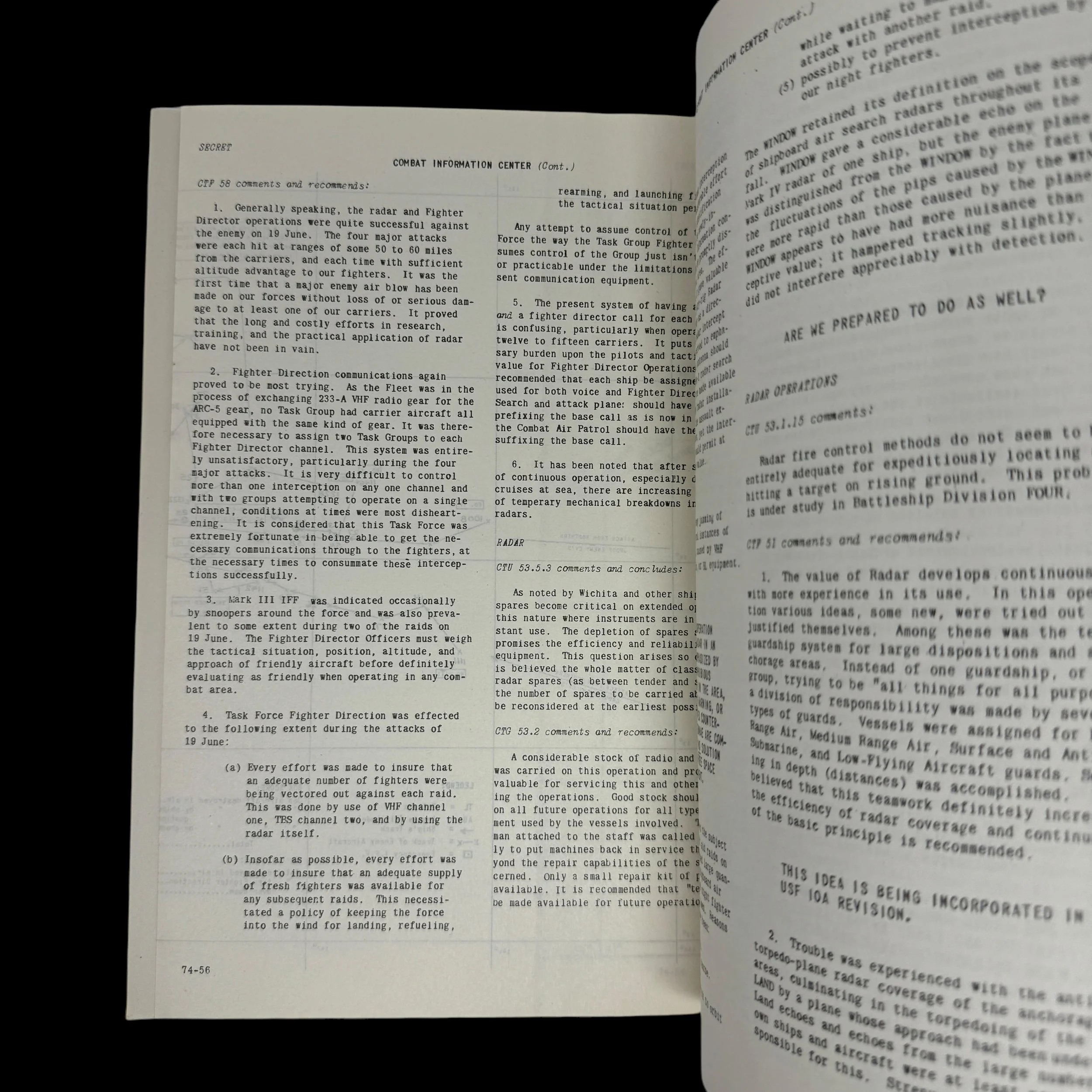
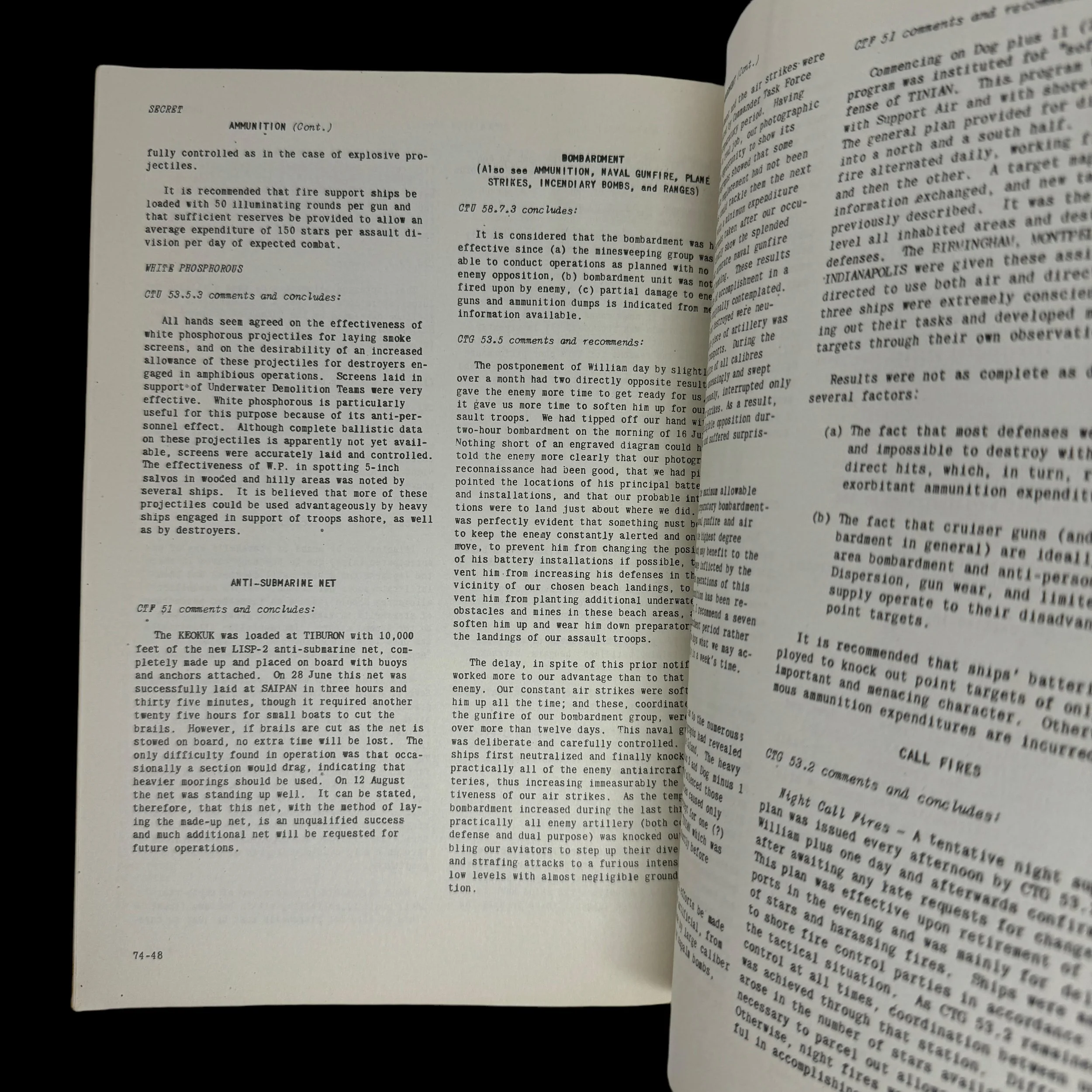
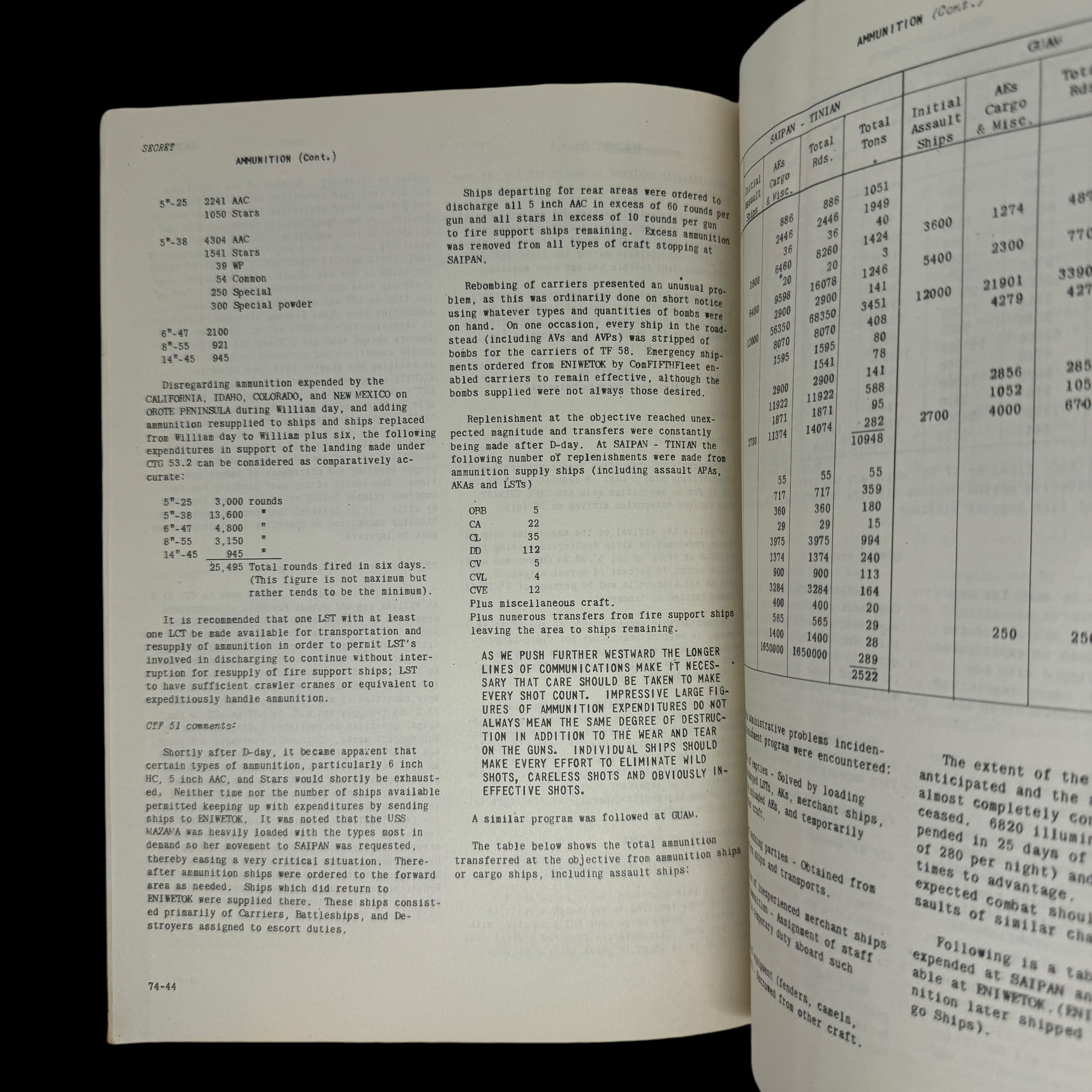
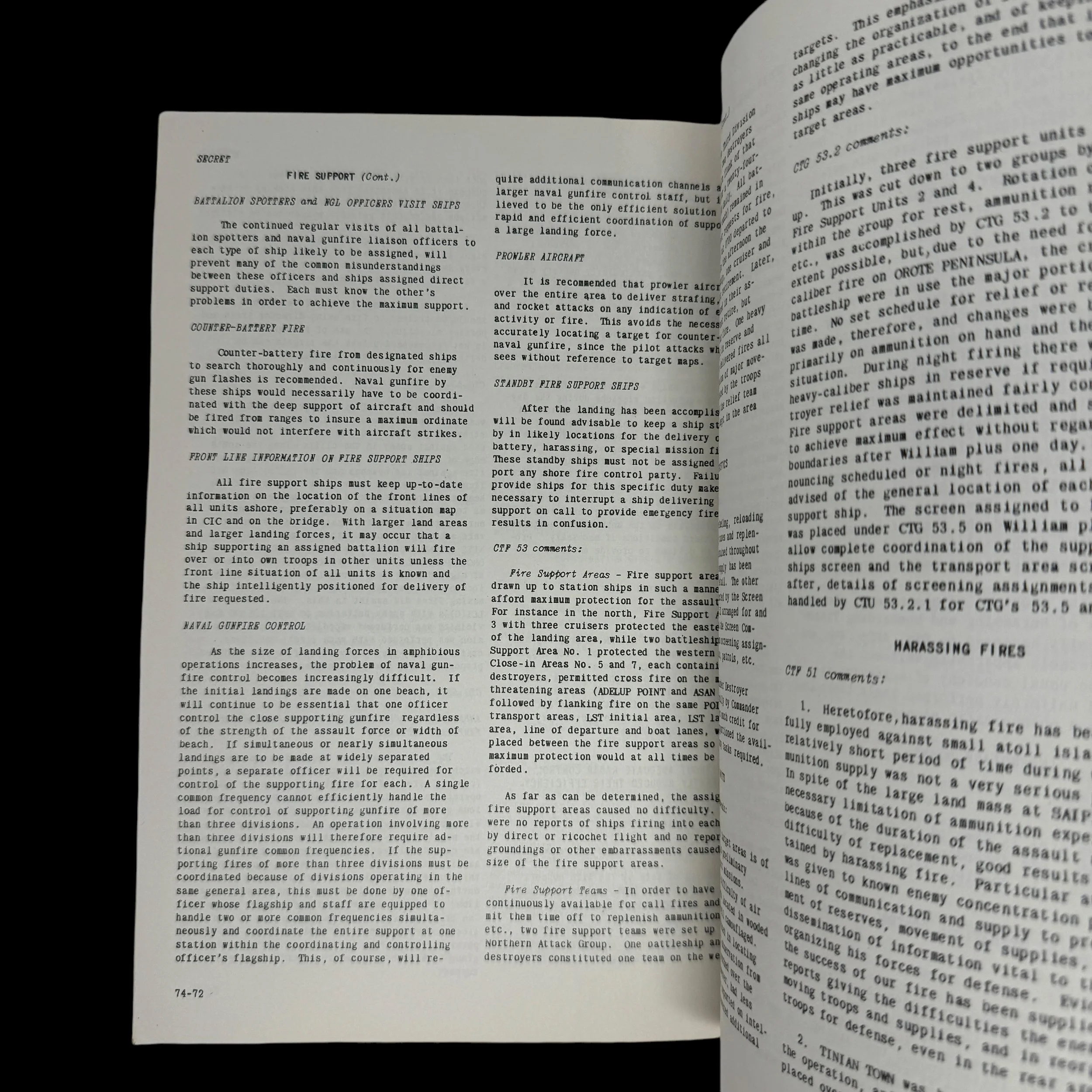
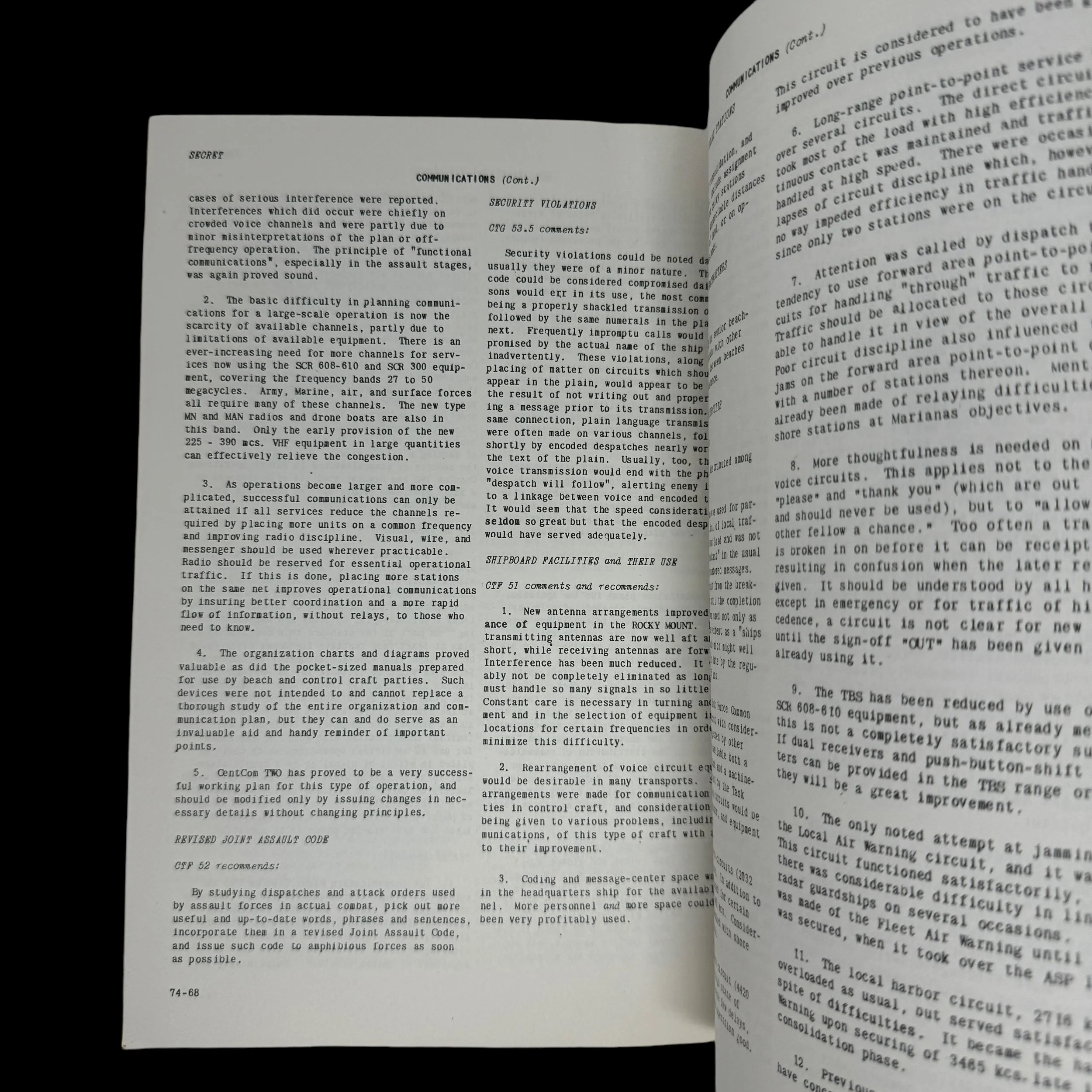
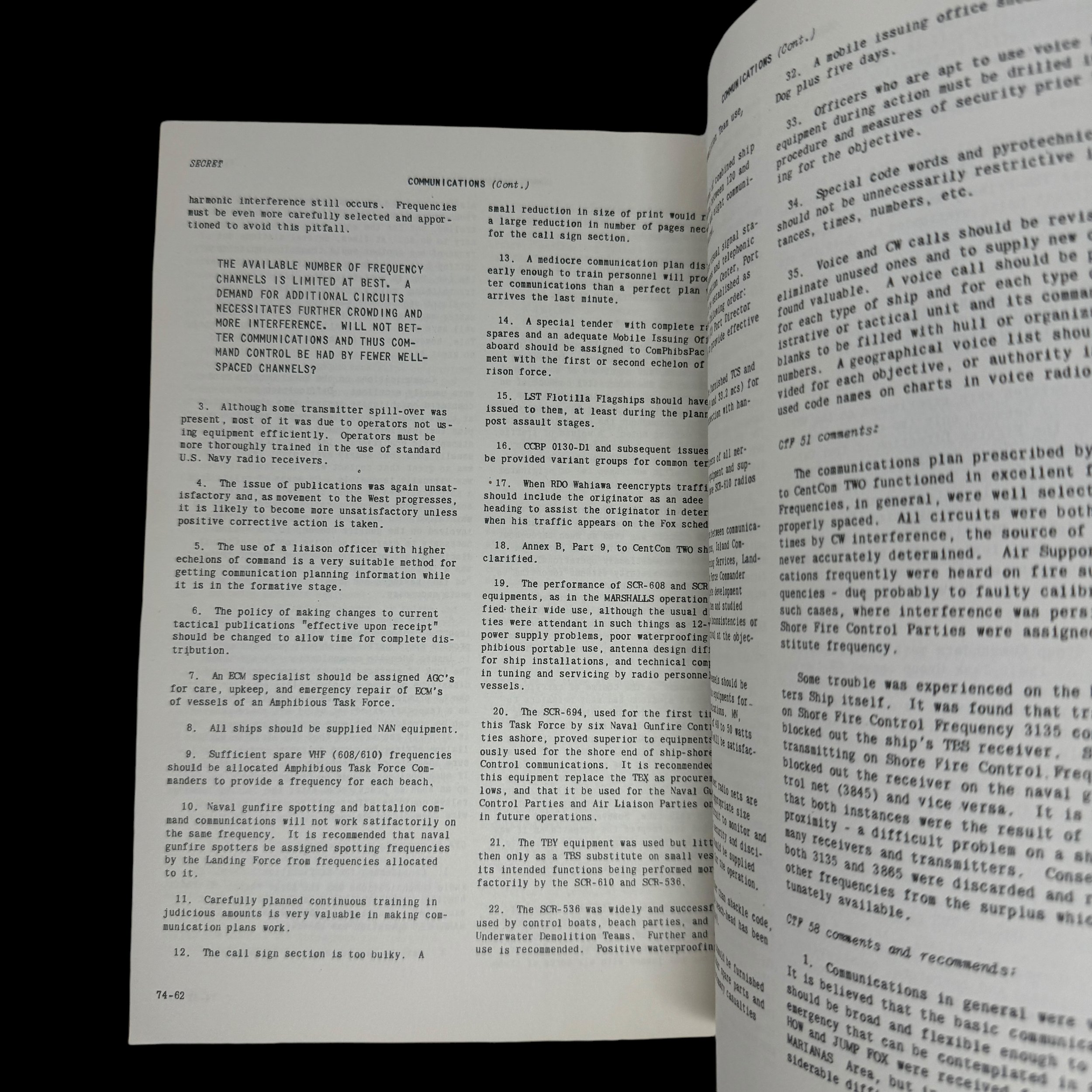
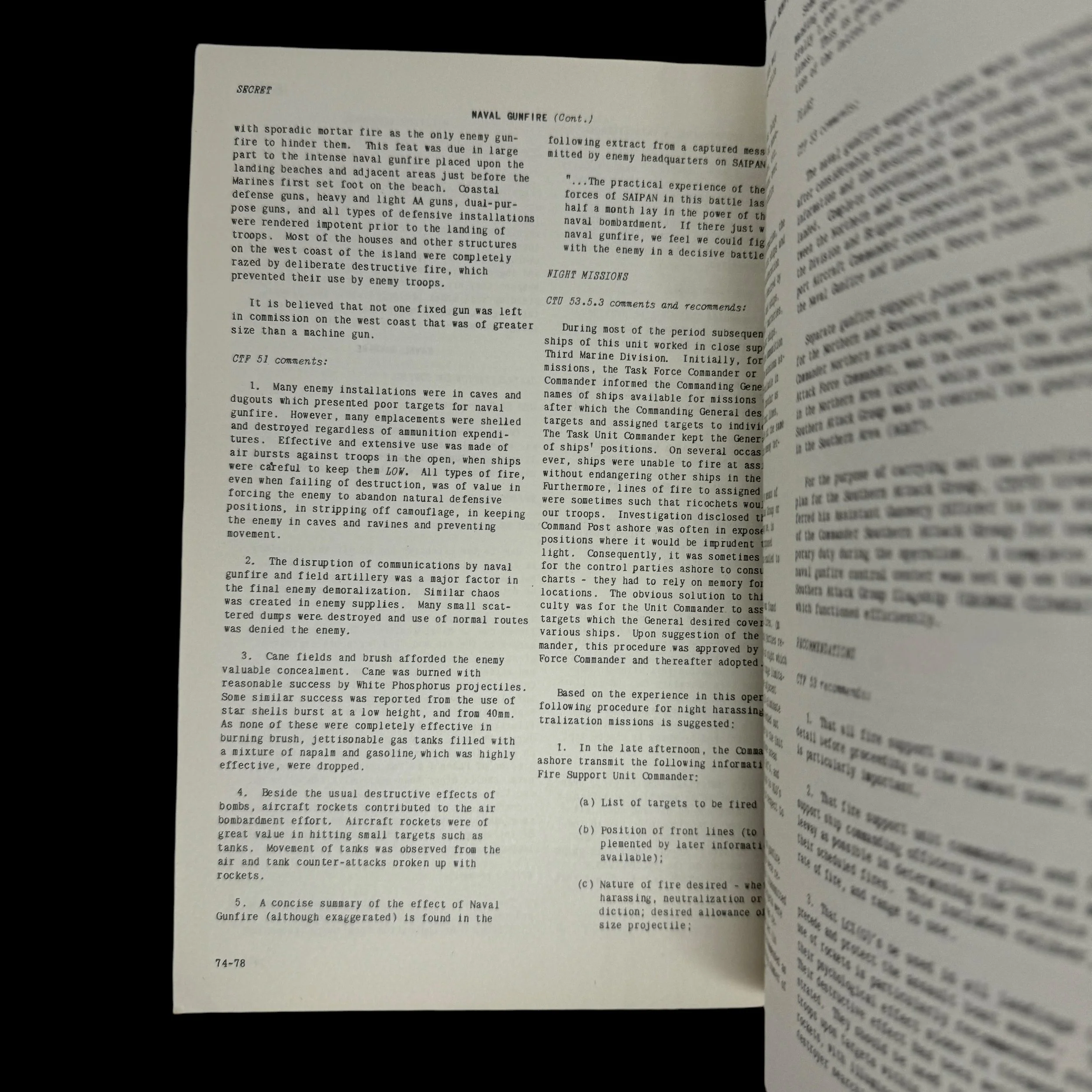
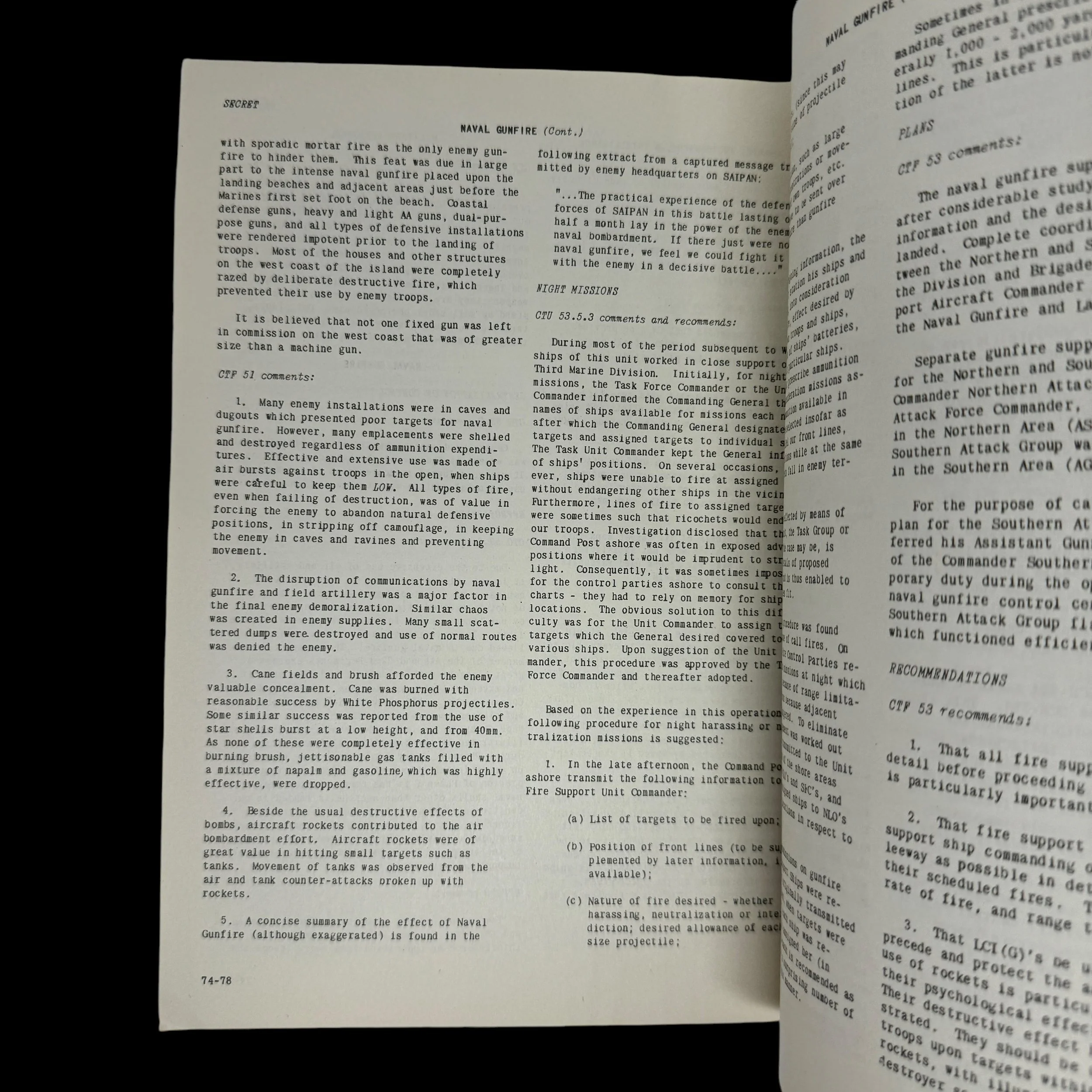

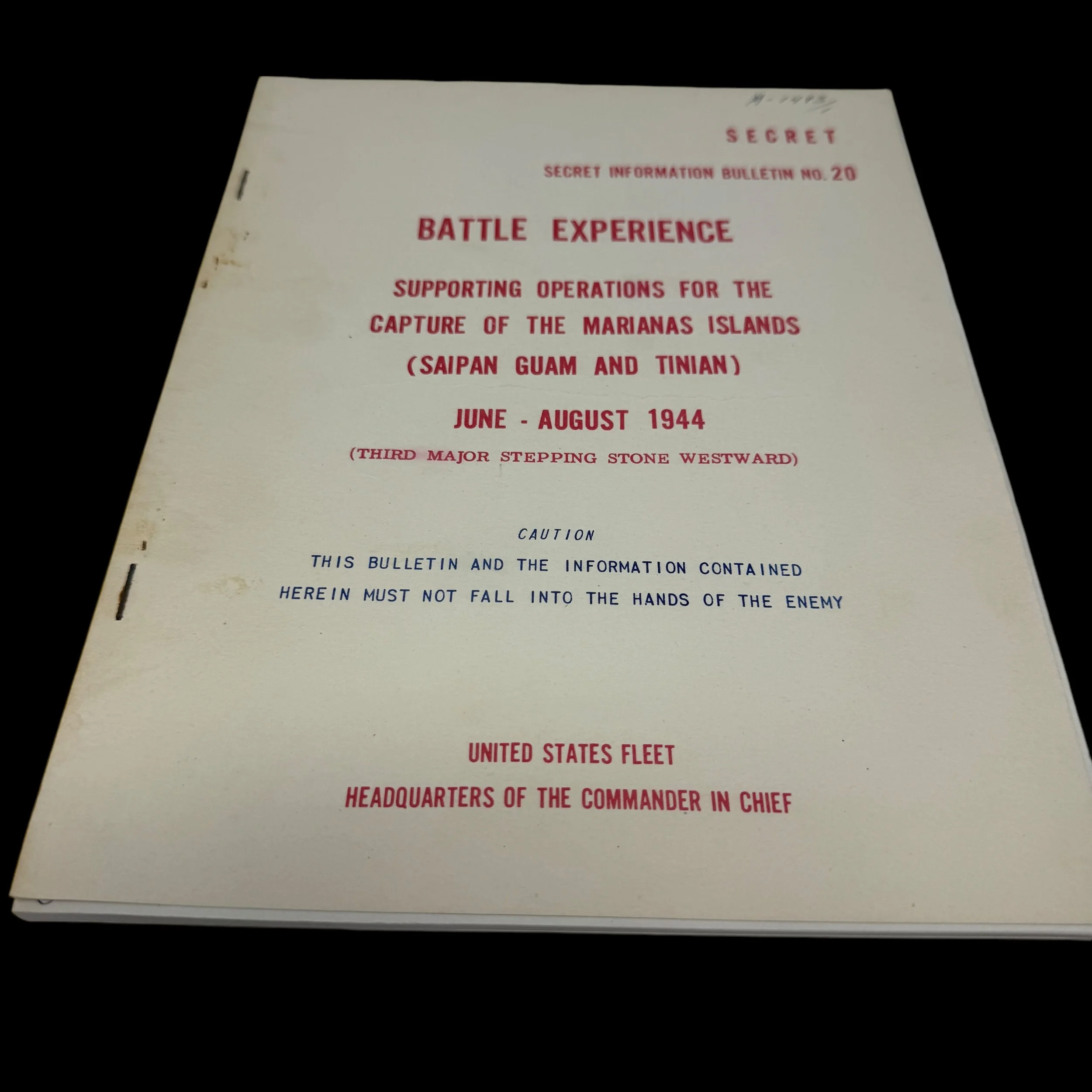
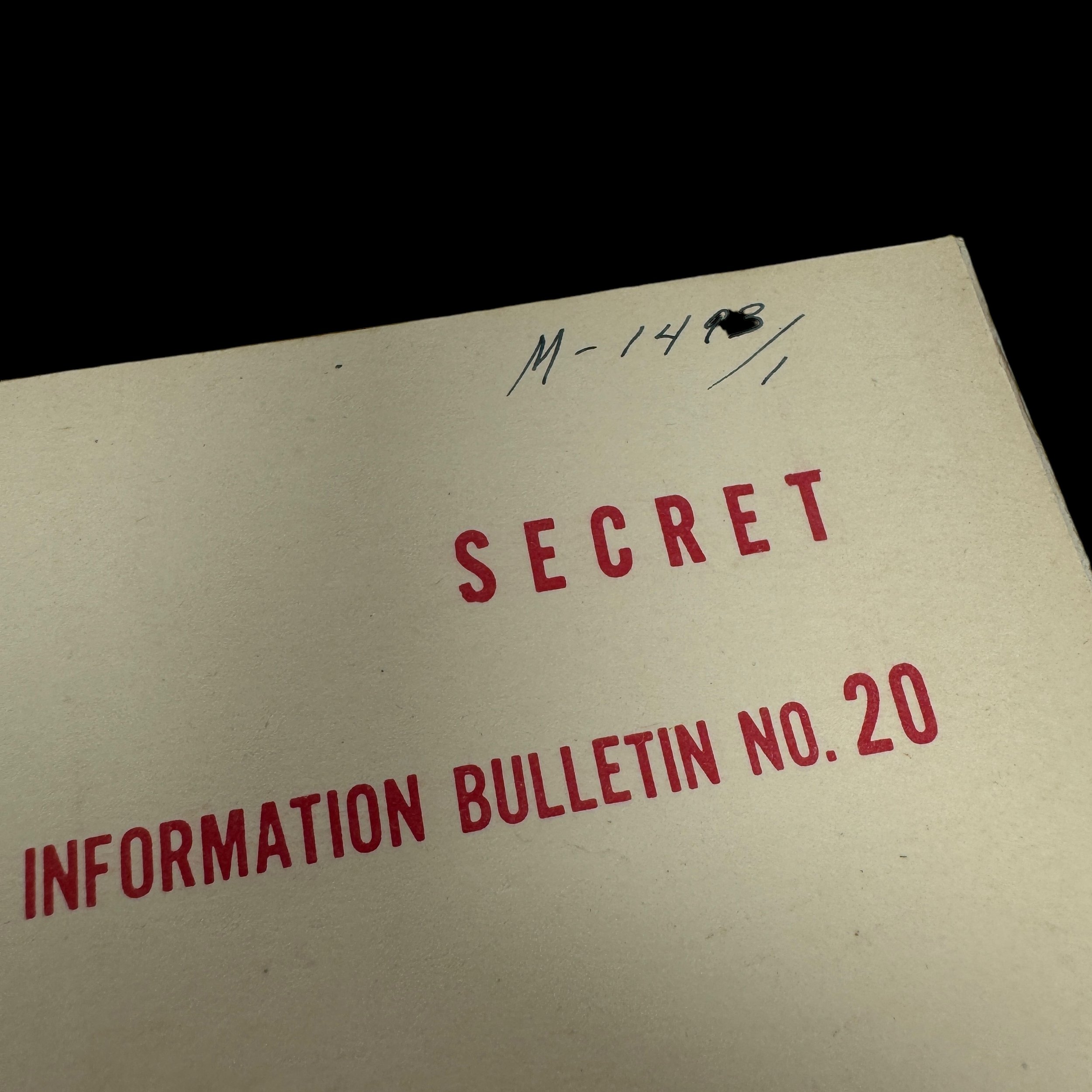
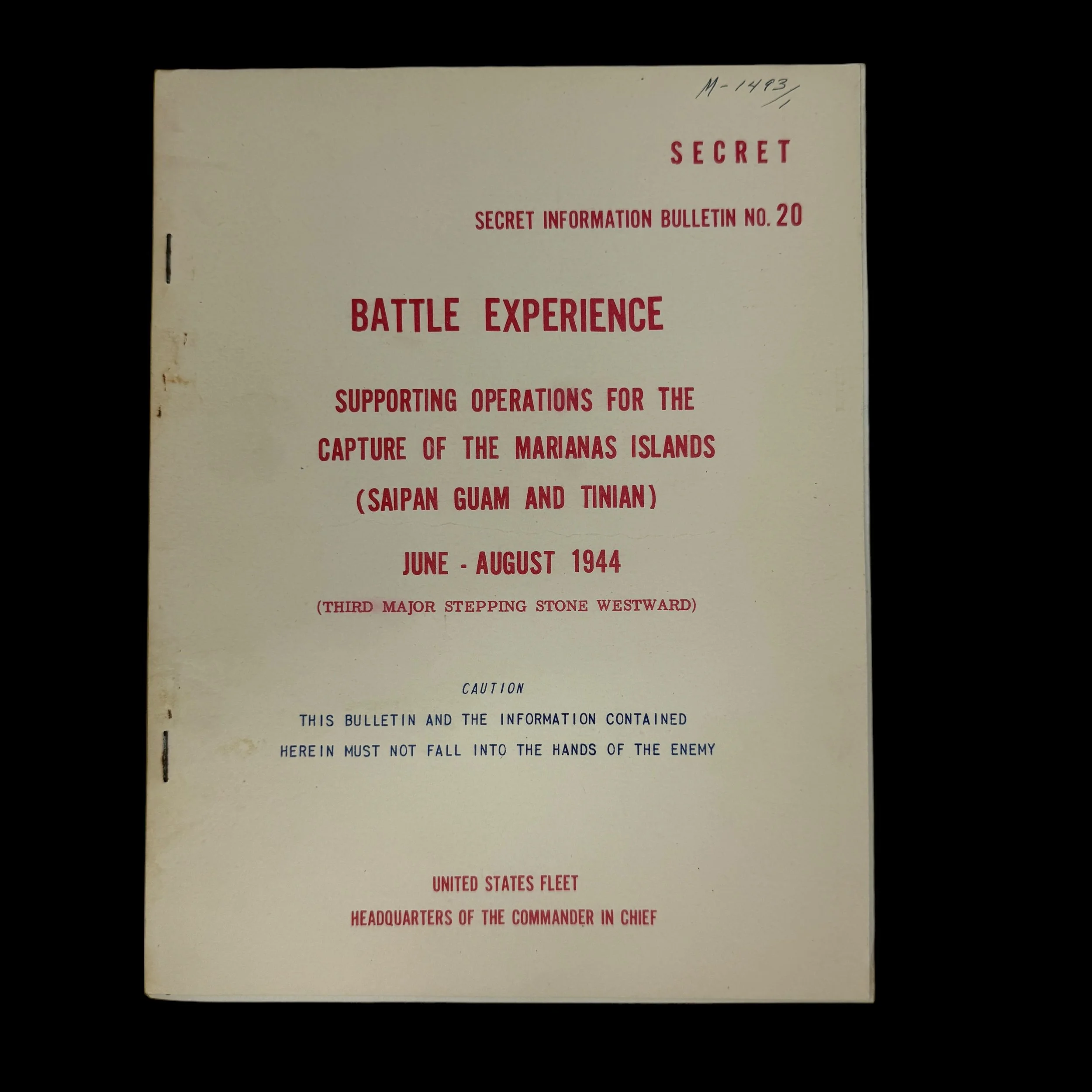
EXTREMELY RARE! WWII SECRET 1944 Capture of the Marianas Islands - Saipan Guam Tinian Headquarters of the Commander in Chief Military Intelligence Report*
Comes with a hand-signed C.O.A.
This extraordinarily rare, museum-grade World War II artifact is an original "SECRET" marked "Battle Experience - Informational Bulletin," meticulously produced by the United States Fleet under the Headquarters of the Commander in Chief. During WWII, the operations and strategic planning of the U.S. Navy were directed by two prominent commanders: Admiral Chester W. Nimitz, Commander in Chief of the United States Pacific Fleet (CINCPAC), and Admiral Ernest J. King, Commander in Chief of the United States Fleet (CINCUS). Their combined leadership played a pivotal role in the Allied victory.
This highly classified and intricately detailed bulletin, issued by the Headquarters of the Commander in Chief, contains secret military maps, intelligence reports, tactical movements, and a unique compilation of "battle experiences." These experiences were drawn from war diaries and battle reports submitted by various commanders and ships engaged in key operations. The bulletin was printed in extremely limited quantities, strictly for the eyes of high-ranking military officials, including Officers and Generals.
The rarity of this document is underscored by the directive on its first page, which states: "Information must not fall into enemy hands - when no longer required they shall be destroyed by burning. No report of destruction need be submitted." As a result, only a handful of these original "SECRET" "Battle Experience - Informational Bulletins" are believed to still exist.
This particular "SECRET INFORMATION BULLETIN NO. 20" is a remarkable example, titled "Battle Experience - Supporting Operations for the Capture of the Marianas Islands - Saipan Guam Tinian - June-August 1944" It offers an unparalleled glimpse into the strategic operations and experiences of the United States Navy during some of the most crucial campaigns of the Pacific Theater.
The WWII Supporting Operations for the Capture of the Marianas Islands: Saipan, Guam, and Tinian (June–August 1944)
The Marianas campaign of June to August 1944 was a critical chapter in the Pacific Theater of World War II. Comprising the battles for Saipan, Guam, and Tinian, these operations were part of a broader Allied strategy to advance towards Japan and secure airbases for long-range bombers, ultimately contributing to Japan's defeat. These islands' capture allowed the United States to establish bases for the new B-29 Superfortress bombers, providing a launching point for strategic bombing raids on Japan, including the eventual atomic bombings. The Marianas campaign is marked by fierce battles, significant amphibious assaults, and crucial naval and air support, culminating in the eventual fall of the islands to Allied forces.
Strategic Importance of the Marianas
The Marianas Islands, situated about 1,500 miles south of Japan, were of immense strategic importance in the Pacific War. They formed part of Japan’s defensive perimeter, and their capture would not only push the front line closer to the Japanese home islands but also sever key supply and communication routes within the Pacific. The islands' strategic location made them a perfect staging area for future operations, including the planned invasion of the Philippines and later mainland Japan. Moreover, airfields on the Marianas would bring Japanese cities, including Tokyo, within range of the U.S. Army Air Force's B-29 bombers.
The capture of Saipan, Guam, and Tinian was seen as pivotal to establishing American air superiority in the region. The decision to seize the Marianas was part of a broader two-pronged strategy in the Pacific, with Admiral Chester W. Nimitz commanding the central Pacific offensive while General Douglas MacArthur led the southern and southwestern Pacific campaigns.
The Battle for Saipan (June 15 – July 9, 1944)
The first and most significant island in the Marianas chain to be attacked was Saipan, an operation that would become one of the fiercest battles of the Pacific War. Operation Forager, the codename for the Marianas campaign, began on June 15, 1944, with the U.S. Fifth Fleet, under Admiral Raymond A. Spruance, initiating the invasion of Saipan. The island was defended by over 30,000 Japanese troops under the command of Lieutenant General Yoshitsugu Saito, who was determined to fight to the death rather than surrender the island.
The invasion began with a massive naval and air bombardment designed to soften Japanese defenses. Approximately 70,000 U.S. Marines and soldiers, primarily from the 2nd and 4th Marine Divisions and the Army’s 27th Infantry Division, landed on Saipan’s beaches. Despite this intense bombardment, the Japanese defenses proved formidable, and American troops encountered heavy resistance from entrenched positions, machine-gun nests, and artillery emplacements.
The battle for Saipan was characterized by brutal, close-quarters fighting through rugged terrain. The Japanese made effective use of the island’s natural landscape, including caves and ridges, to mount a staunch defense. The Americans were forced to fight inch by inch, using flamethrowers, tanks, and grenades to dislodge Japanese soldiers from fortified positions.
One of the most harrowing episodes of the battle occurred during the final stages, when thousands of Japanese civilians were coerced by propaganda into committing mass suicide rather than surrender. The tragedy at Marpi Point, where civilians leapt from cliffs to their deaths, underscored the desperation of the Japanese defense and the psychological impact of the battle.
On July 9, after nearly a month of intense combat, the island was declared secure. The victory at Saipan had profound implications: it shocked the Japanese leadership, leading to the resignation of Prime Minister Hideki Tojo, and provided the Allies with a critical base for further operations in the Pacific.
The Battle for Guam (July 21 – August 10, 1944)
Guam, the largest island in the Marianas, had been under Japanese control since 1941, when it was captured shortly after the attack on Pearl Harbor. Its recapture was a key objective for the U.S. military. The invasion of Guam was postponed until Saipan was secured, as Admiral Nimitz wanted to avoid splitting his forces.
The assault on Guam began on July 21, 1944, with a pre-invasion bombardment by U.S. naval forces. The island was defended by around 18,000 Japanese troops under Lieutenant General Takeshi Takashina, who had fortified the island with coastal artillery, bunkers, and minefields.
The invasion force, composed of Marines from the 3rd Marine Division, 1st Provisional Marine Brigade, and soldiers from the Army’s 77th Infantry Division, faced fierce resistance upon landing. Like Saipan, Guam’s terrain was rugged, with dense jungle and mountains, complicating the American advance. However, after days of grueling combat, including numerous Japanese counterattacks, American forces were able to secure the island.
One of the unique aspects of the battle for Guam was the involvement of the island’s native Chamorro population. The Chamorros had suffered greatly under Japanese occupation, and many assisted American forces as scouts and guides. Their knowledge of the terrain proved invaluable in navigating the island’s difficult geography.
The recapture of Guam was declared complete on August 10, 1944. It provided the U.S. Navy and Air Force with an essential base for operations in the Western Pacific and allowed for the construction of airfields capable of supporting the new B-29 bombers.
The Battle for Tinian (July 24 – August 1, 1944)
The final island in the Marianas chain to be captured was Tinian, located just a few miles southwest of Saipan. Tinian’s flat terrain made it ideal for constructing airfields, which was one of the primary reasons for its capture. The island was defended by approximately 9,000 Japanese troops under Colonel Kiyochi Ogata, who had constructed a network of bunkers, artillery positions, and other defensive works.
The invasion of Tinian began on July 24, 1944, with an amphibious assault by the U.S. 2nd and 4th Marine Divisions. The initial landings were carried out using a tactical deception: the Marines feigned a landing at Tinian’s more heavily defended beaches, only to land on the less fortified northern coast. This surprise maneuver allowed American forces to establish a beachhead with minimal resistance.
Despite the early success of the landings, the battle for Tinian was not without its challenges. The Japanese mounted several counterattacks, including banzai charges, in an effort to halt the American advance. However, the Marines, supported by naval and aerial bombardments, steadily pushed the Japanese defenders back. By August 1, the island was declared secure.
Tinian’s capture had enormous strategic significance. Its airfields, quickly expanded by American engineers, became the launching point for B-29 bombing raids on the Japanese home islands. Notably, it was from Tinian that the B-29s Enola Gay and Bockscar took off in August 1945 to drop atomic bombs on Hiroshima and Nagasaki, respectively, bringing the war in the Pacific to a cataclysmic end.
Naval and Air Support: The Battle of the Philippine Sea
While the ground battles for Saipan, Guam, and Tinian were raging, the U.S. Navy engaged the Japanese Combined Fleet in one of the largest naval battles of World War II: the Battle of the Philippine Sea, often referred to as the "Great Marianas Turkey Shoot." Fought between June 19 and 20, 1944, this battle saw the Japanese fleet attempt to disrupt the U.S. invasion of Saipan.
The U.S. Fifth Fleet, under Admiral Spruance, decisively defeated the Japanese fleet, sinking three aircraft carriers and destroying over 600 Japanese aircraft, while losing only around 100 planes in return. This battle effectively eliminated Japan’s carrier-based air power and secured American dominance in the Pacific. It ensured that Japanese reinforcements could not reach the Marianas and allowed the U.S. to proceed with the invasion plans without fear of naval interference.
The capture of the Marianas Islands was a turning point in the Pacific War. The successful invasions of Saipan, Guam, and Tinian brought the war within striking distance of Japan’s home islands and allowed the U.S. to establish airbases for strategic bombing. The battles were marked by intense fighting, high casualties on both sides, and the unyielding determination of Japanese forces to resist at all costs. However, the superior coordination of American naval, air, and ground forces ensured a decisive victory that would have far-reaching consequences for the remainder of the war.
The Marianas campaign also had a profound psychological impact on both the Japanese leadership and its people. The loss of these islands marked the beginning of the end for Japan, as it became clear that the Allies were capable of breaching the Japanese defensive perimeter and advancing toward the homeland. The success of these operations laid the groundwork for the eventual defeat of Japan and the end of World War II.